RECAP: AMUSED IN THE ALLEGHENIES
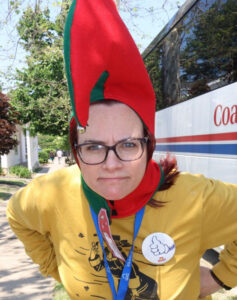 The Society of Commercial Archeology, a group interested in roadside commercial landscapes – especially those of the 20th century – rolled to Erie, Pennsylvania, for their bi-annual conference.
The Society of Commercial Archeology, a group interested in roadside commercial landscapes – especially those of the 20th century – rolled to Erie, Pennsylvania, for their bi-annual conference.
Included were two US 6 field trips; east to Kinzua Bridge State Park, Pennsylvania, and west to “A Christmas Story” House in Cleveland, Ohio, where Emily learned some pointers about crowd control.

Brian Butko welcomes the SCA Erie conference participants on board the Victorian Princess for a reception cruise around Presque Isle Bay.

SCA president Michael Hirsch and Board member Jeremy E. on the Erie booze crooze.

Out to (Lake Erie) sea with Mindy, Janice, Gary, and Brian.

Passing Presque Isle Peninsula on the Victorian Princess.

The Canadiens, Brian and Peter, afloat in Erie’s Presque Isle Bay.

Dawn on the bus for the first of two Kevin Patrick-led field trips over Route 6.

Coffee and pie at the Lawrence Park Dinor -spelt the Erie way- in Lawrence Park, Pennsylvania.

The Lawrence Park Dinor is a Silk City Diner manufactured in Paterson, New Jersey, that was brought to the model industrial town of Lawrence Park, Pennsylvania, where General Electric built locomotives, in 1948.

Dawn, who has been commanding the Lawrence Park Dinor for a year, tells her story to the SCA crowd.

Gary Blatt inside the classically Silk City barrel-roofed and porcelain enamel clad Lawrence Park Dinor.

Brian Butko, one of the co-authors of the book, “Diners of Pennsylvania” enjoying coffee and pie at the Lawrence Park Dinor in Lawrence Park, Pennsylvania.

Fred Z. and Emily S. at My Daddy’s Barber Shop in Lawrence Park, Pennsylvania.
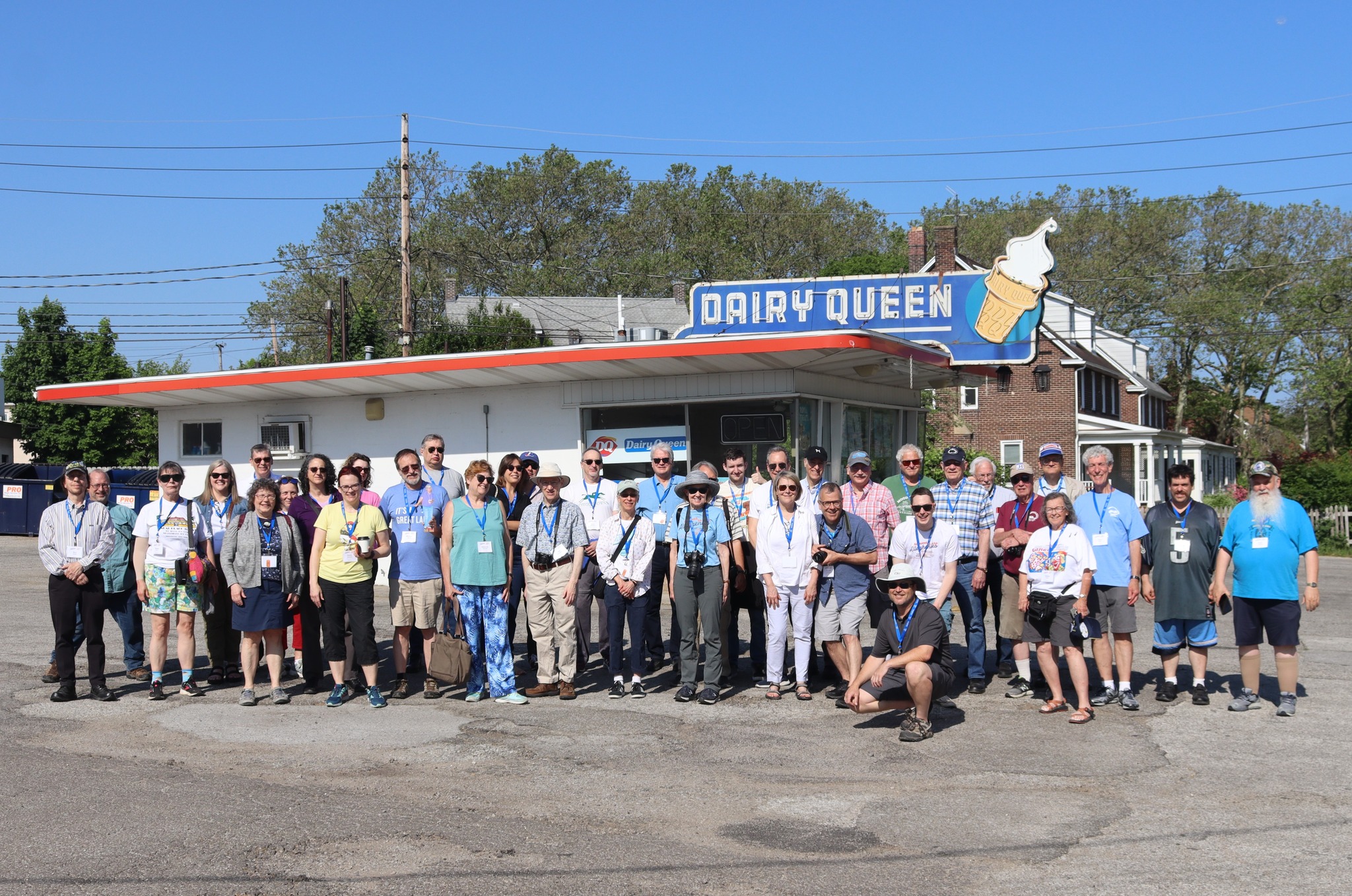
Society of Commercial Archeology at a vintage Dairy Queen in Lawrence Park, Pennsylvania.
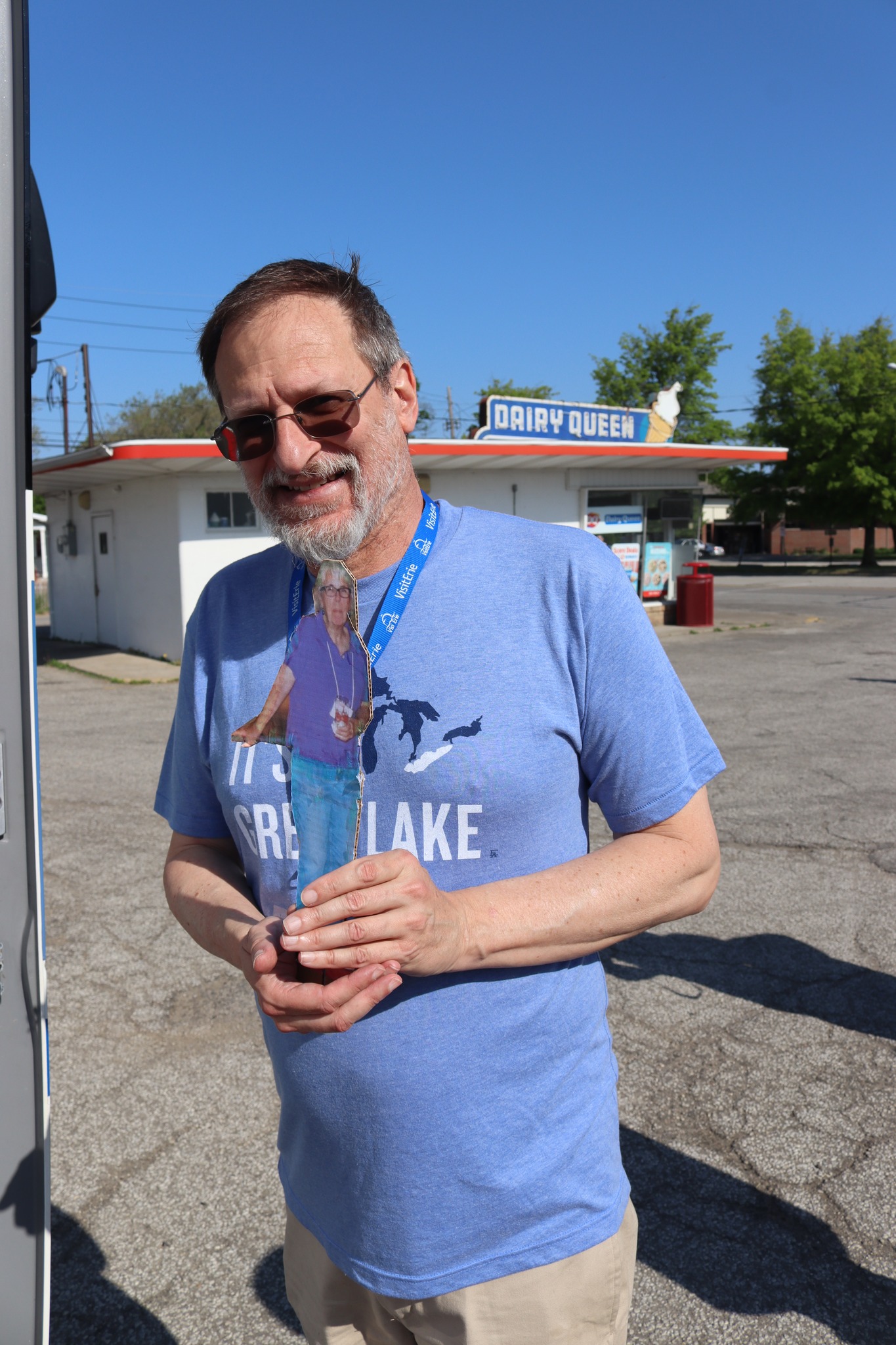
Michael Hirsch on the road with Little Carol standing in for the much-missed real Carol Ingald.

SCA tours the Warner Theater, one of Rapp and Rapp’s elaborate Beaux Arts movie palaces that opened on State Street in downtown Erie in 1931.
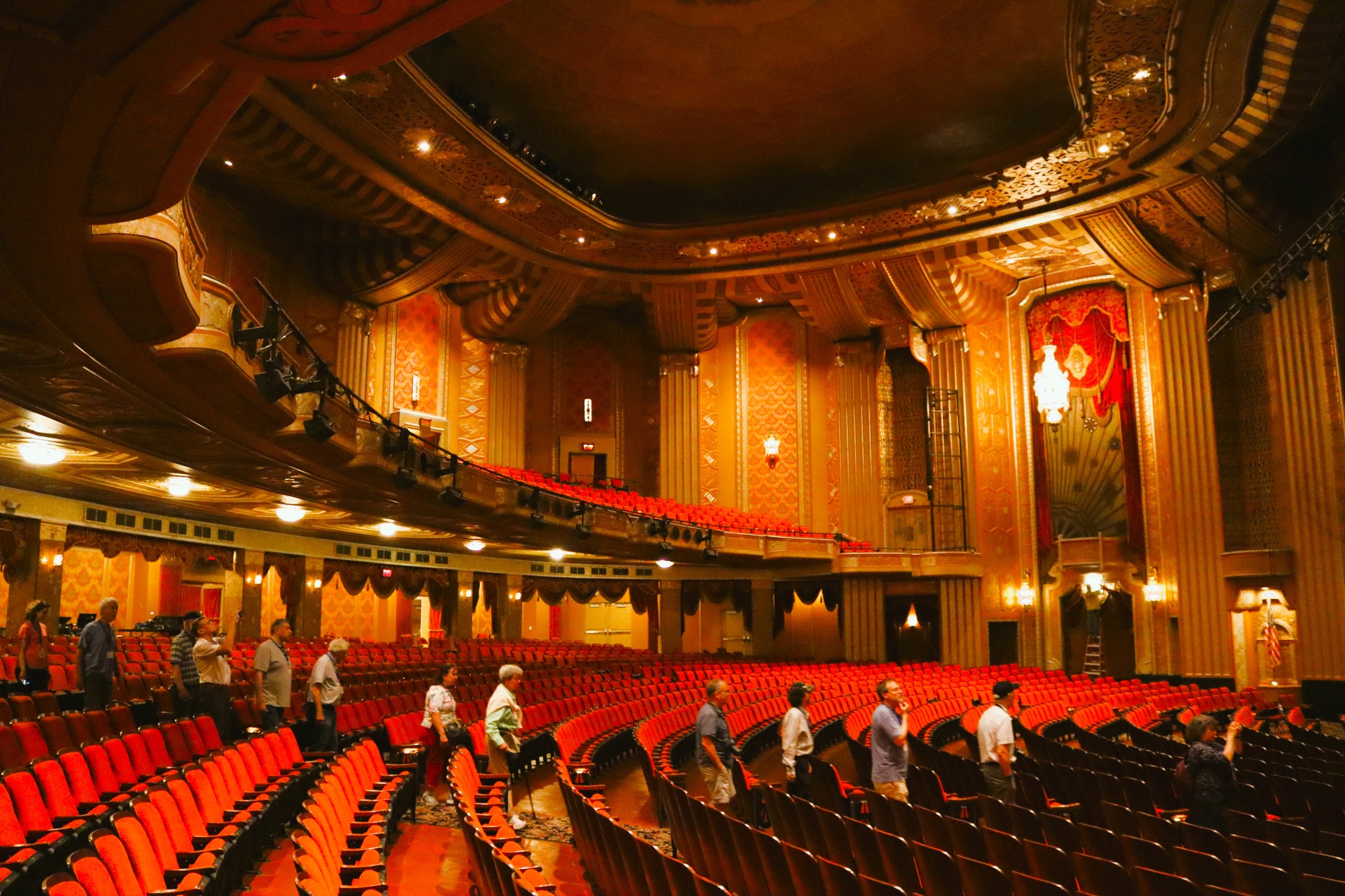
Swallowed up by the Warner Theater’s cavernous interior. The Erie Civic Center Authority bought the closed Warner in 1977, restoring the building as the home for the Center for Performing Arts.
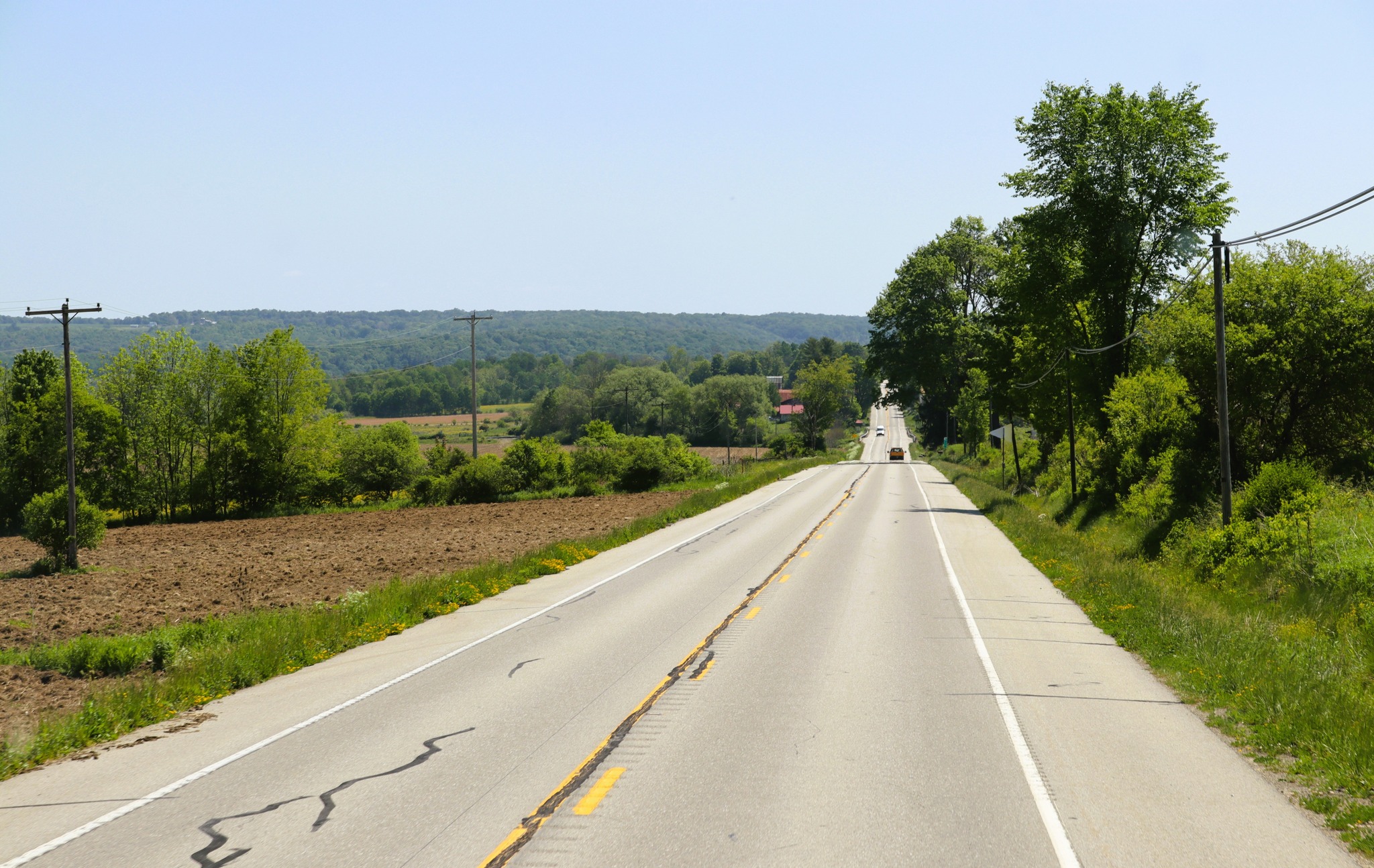
Eastbound on Route 6 through the Brokenstraw Valley to the western edge of the Allegheny Mountains.
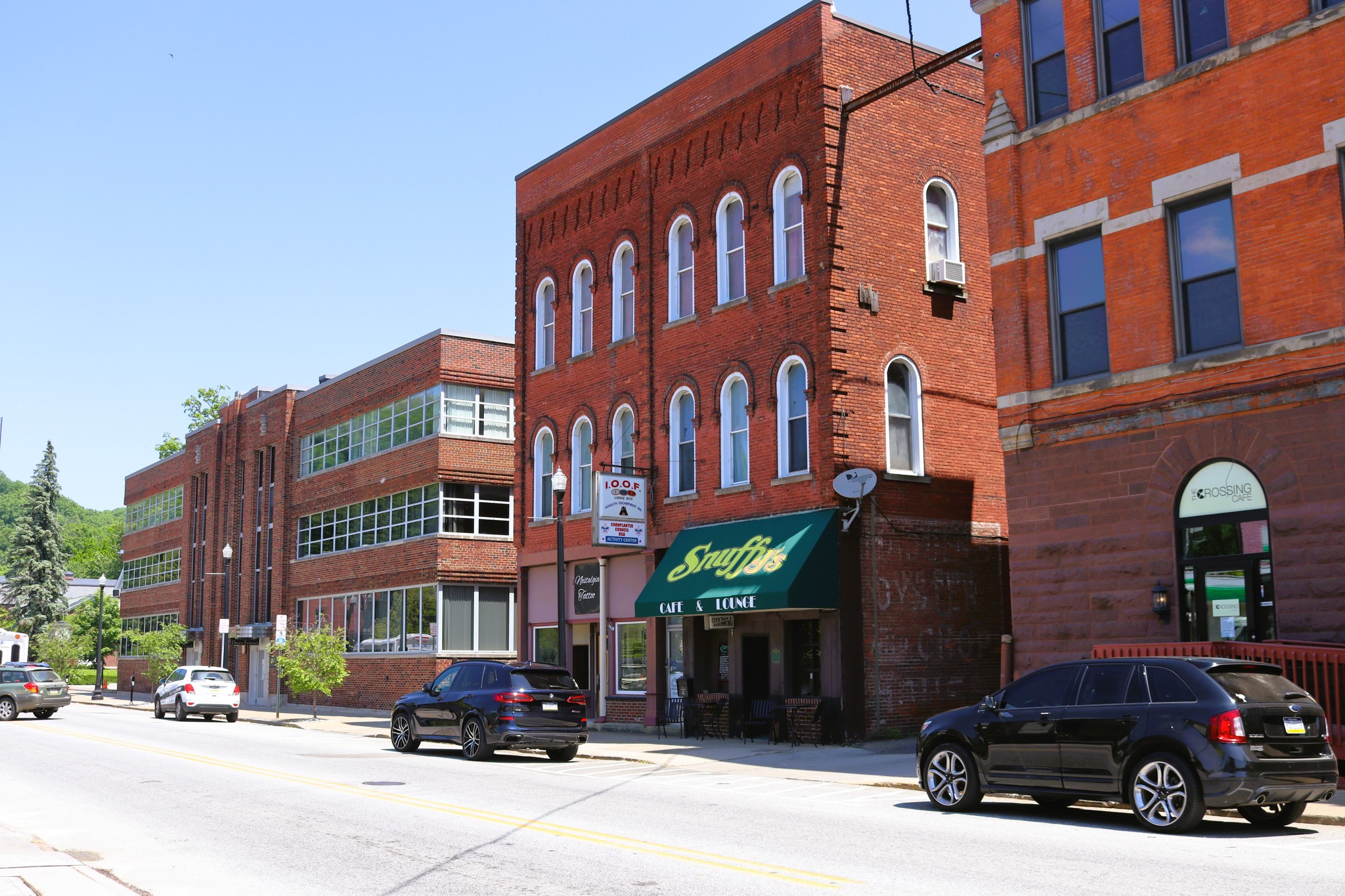
The SCA walking tour through Warren, Pennsylvania, highlighted the downtown commercial landscape of Main Street America inc0luding storefronts, entrance aprons, downtown department stores, banks, and a few ghost signs, like the remains of “Oysters and Chops” at the old New York Restaurant. The walk also included Blair Corporate headquarters in their early Modern International plant opened in 1933.
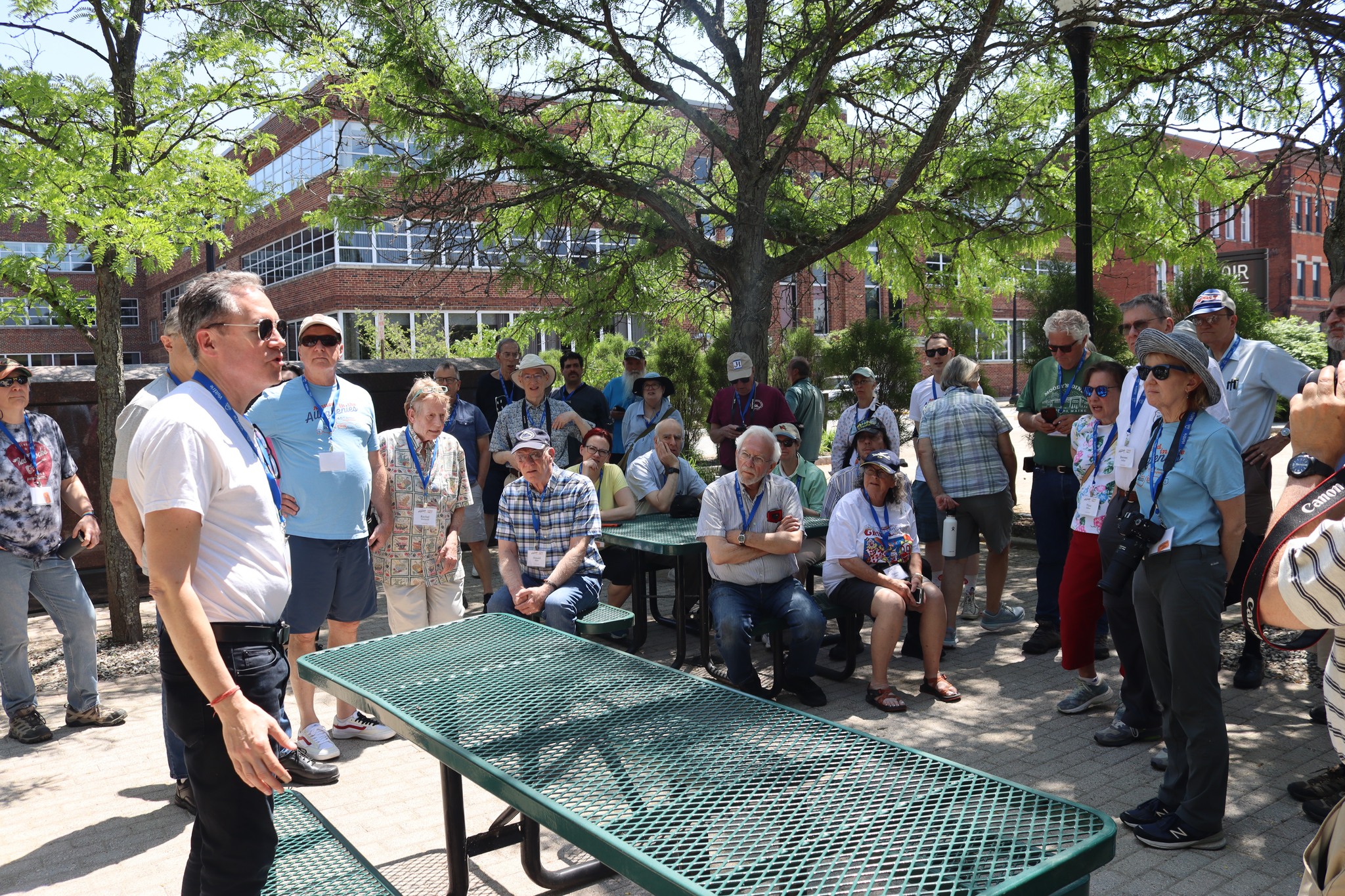
SCA member and Blair Corporation employee, Alan Woodruff, fills us in on how a rubberized raincoat manufacturer in an old Warren, Pennsylvania, furniture factory turned into clothing and households direct mail order Blair Corporation.
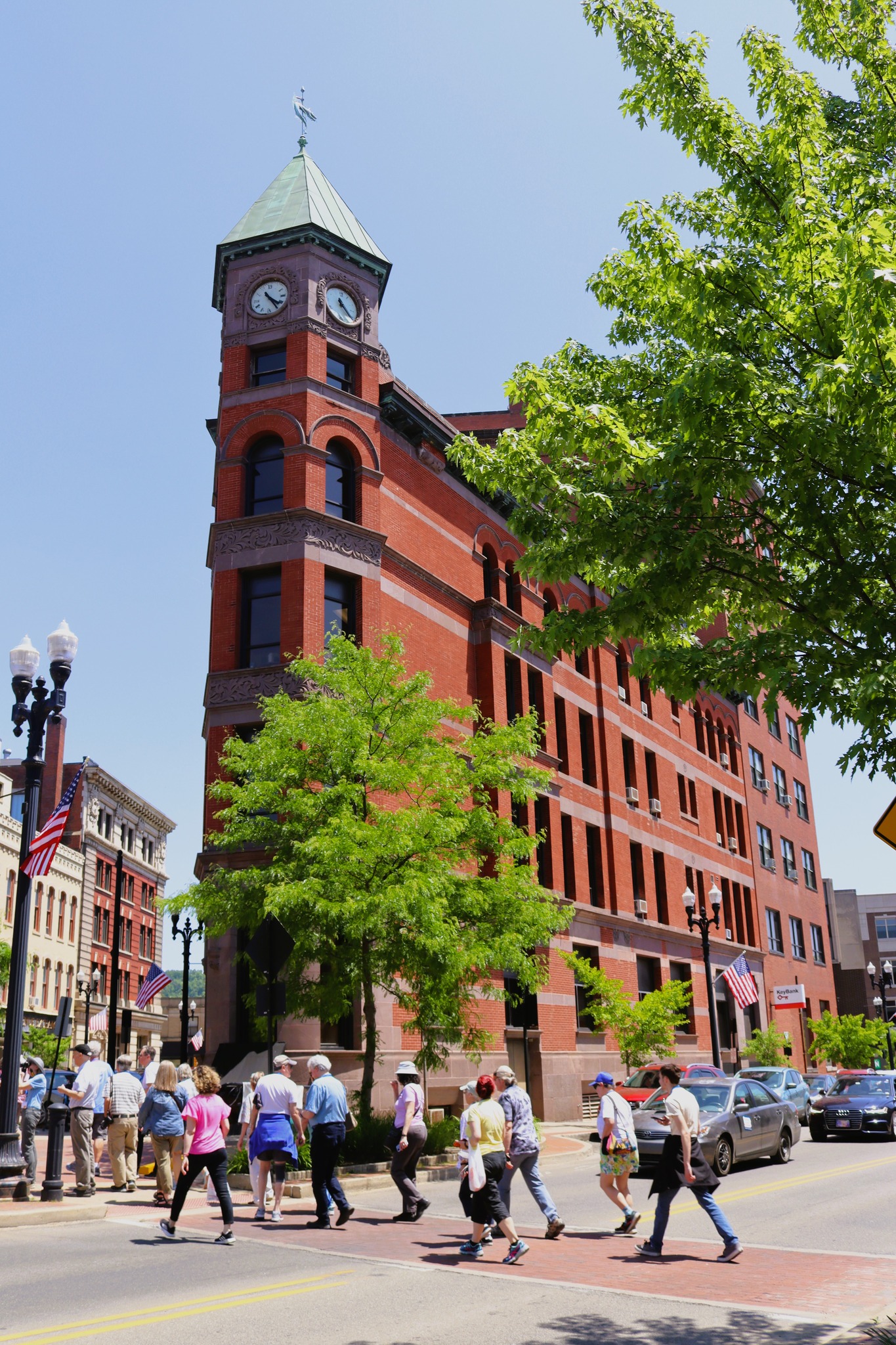
Warren, Pennsylvania’s Flatiron Building, completed in 1891 for the Warren Savings Bank.
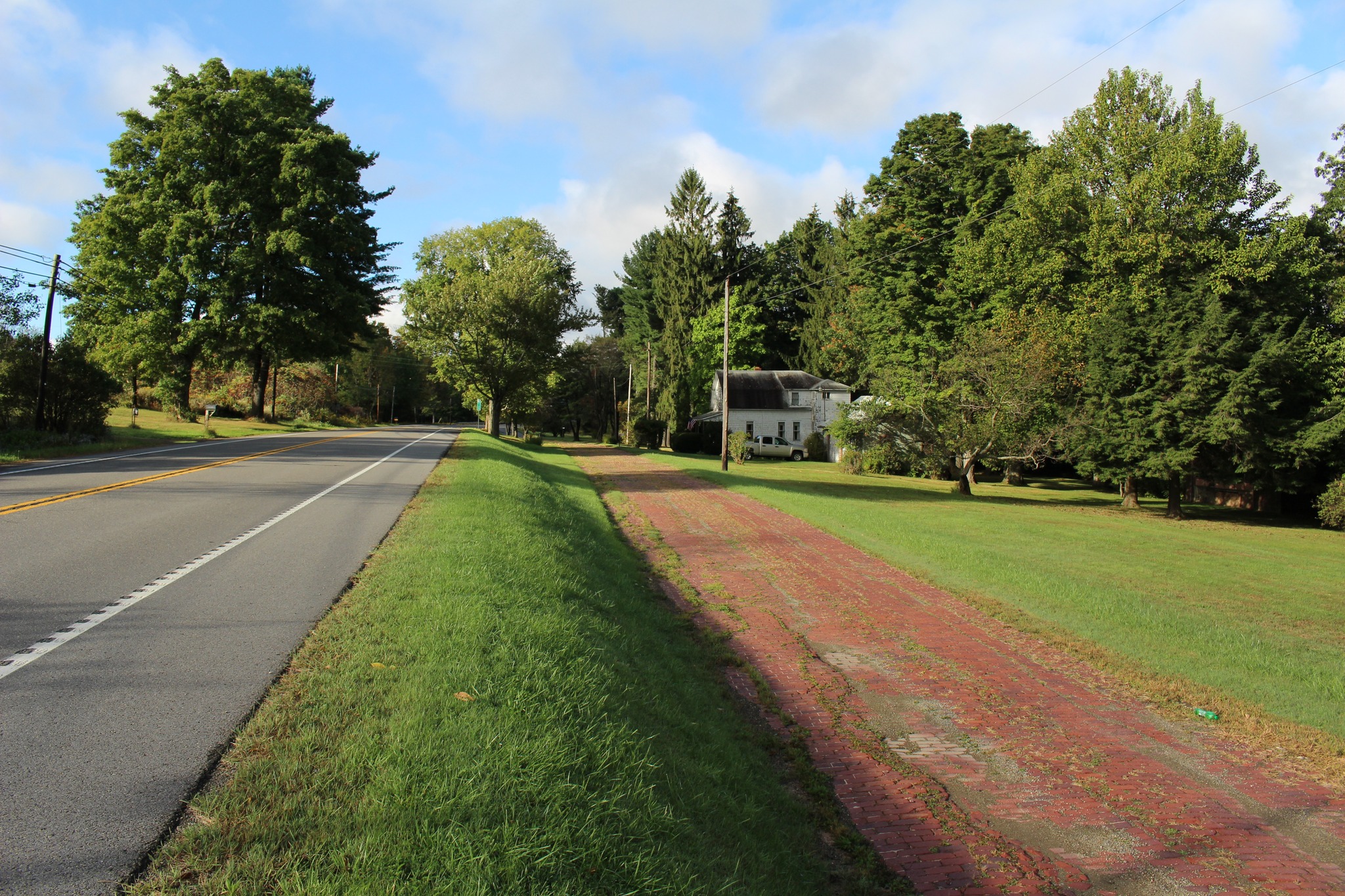
Route 6 and a remnant bit of 1920s brick-pavement on the Big Level east of Kane, Pennsylvania, where the old Roosevelt Highway ran concurrent with the Buffalo-Pittsburgh Highway on the Big Level, the westernmost piece of northern Pennsylvania’s Allegheny Plateau.
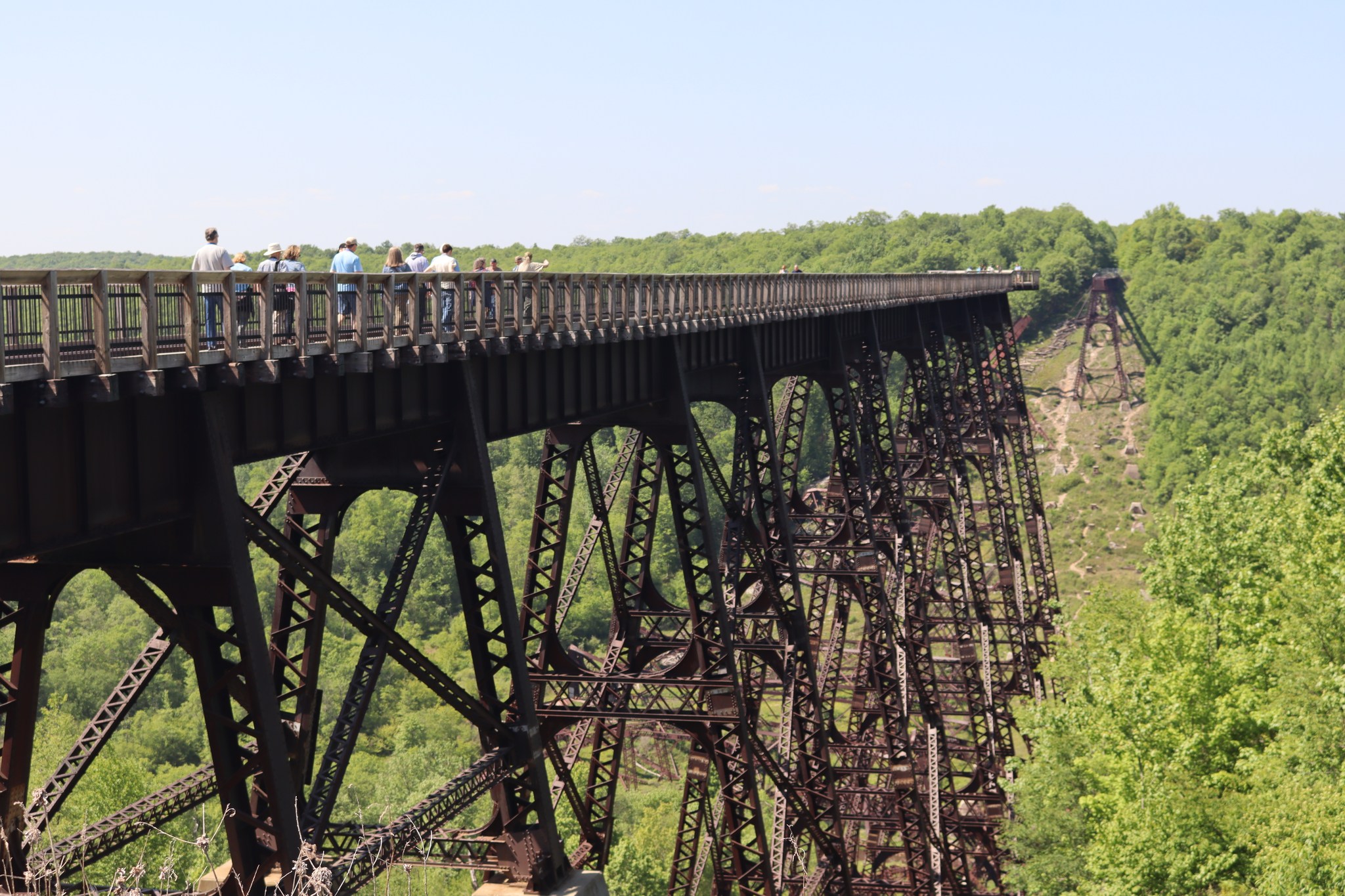
The Erie Railroad built the Kinzua Bridge across the Big Level’s Kinzua Gorge in 1882 to bring western Pennsylvania bituminous coal into New York and the Great Lakes region. It was rebuilt with steel in 1900 and abandoned to become the centerpiece of Kinzua Bridge State Park in 1959. The bridge, once the highest in Pennsylvania, was toppled by a tornado in 2003.
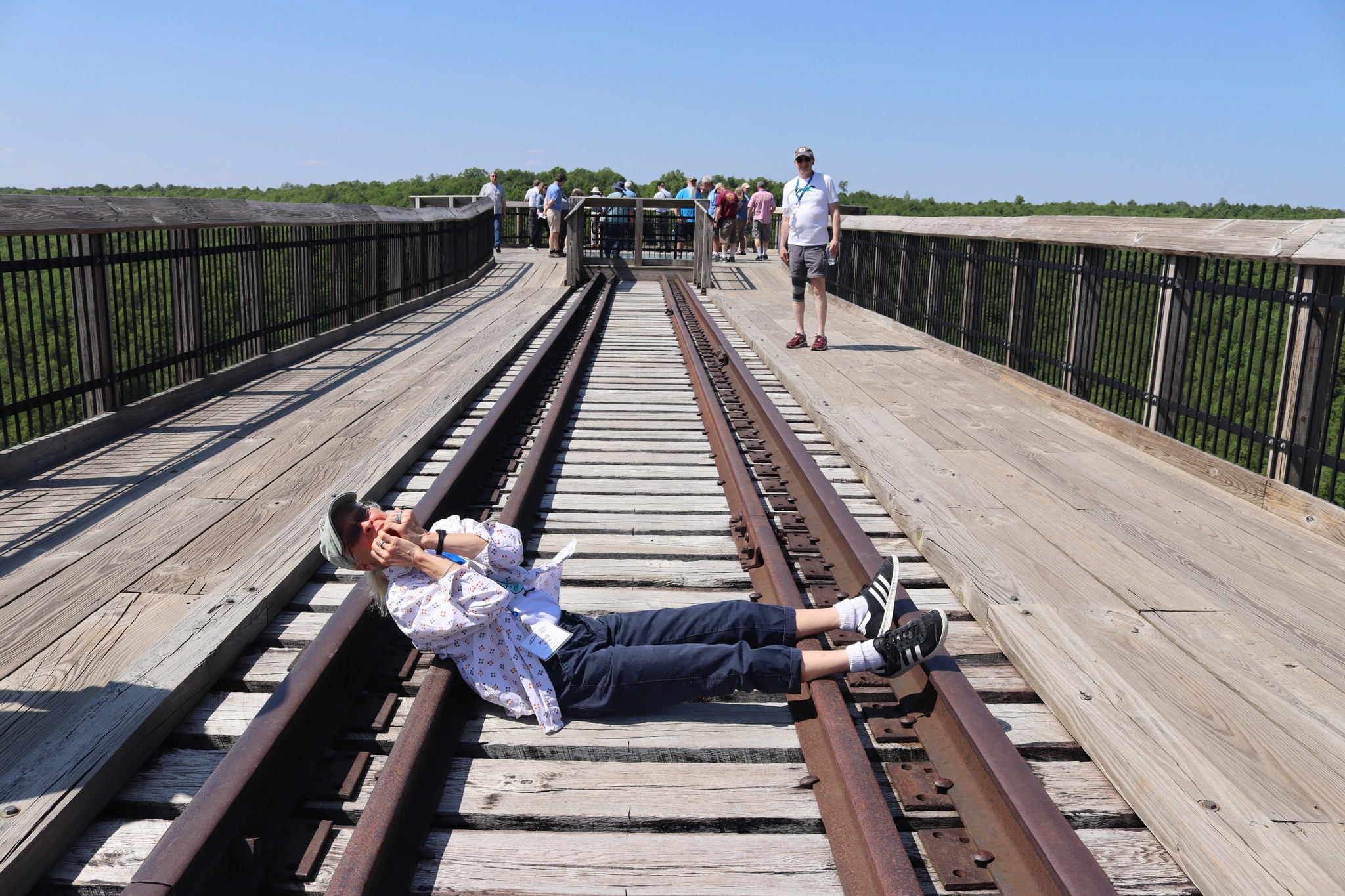
Nancy Sturm in peril on the Kinzua Bridge high atop the Big Level in the Pennsylvania Wilds.
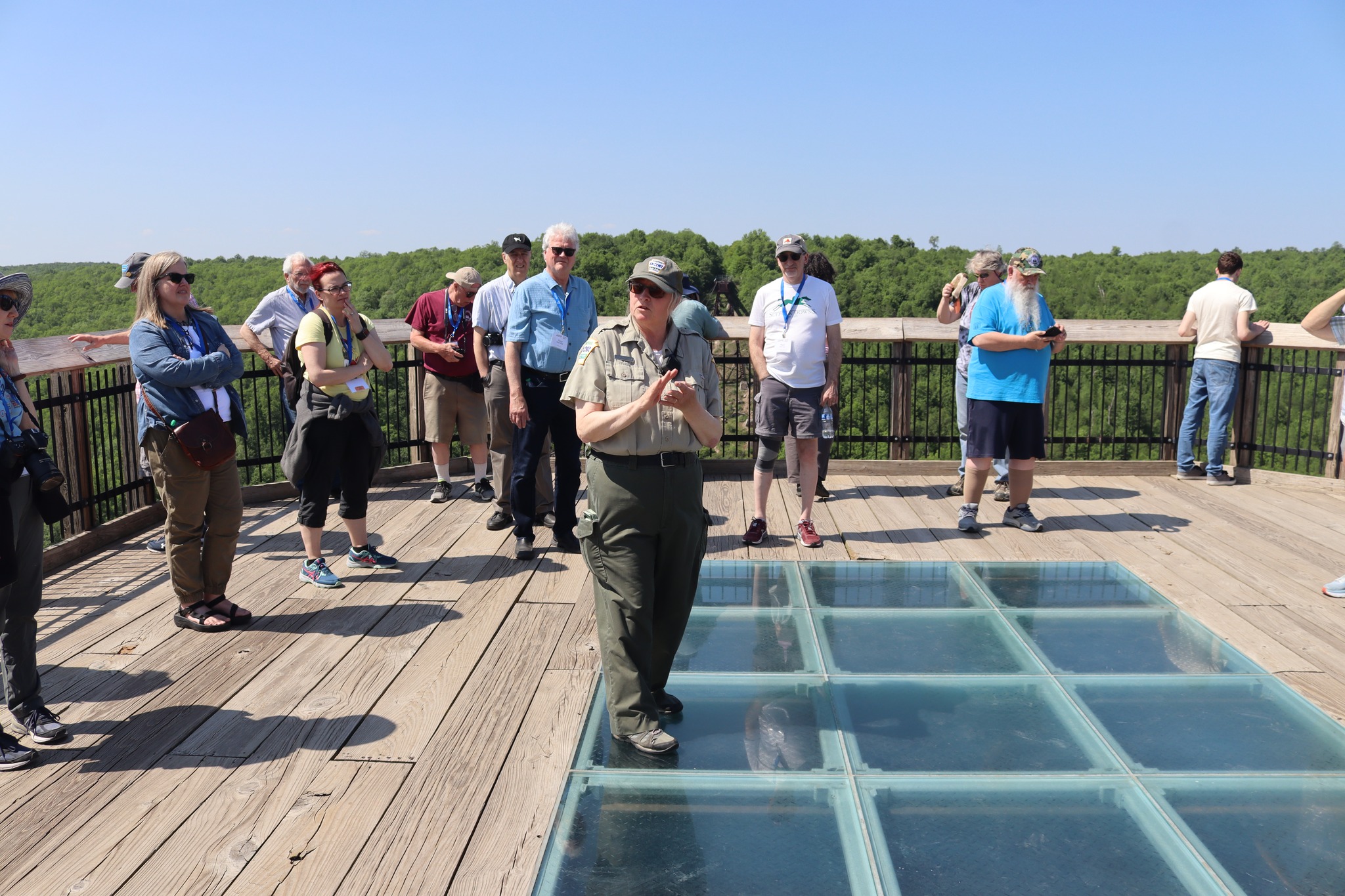
State park ranger Holly tells the story of how a collapsed railroad bridge became the Kinzua Skywalk, one of Pennsylvania Wild’s keystone tourist attractions.
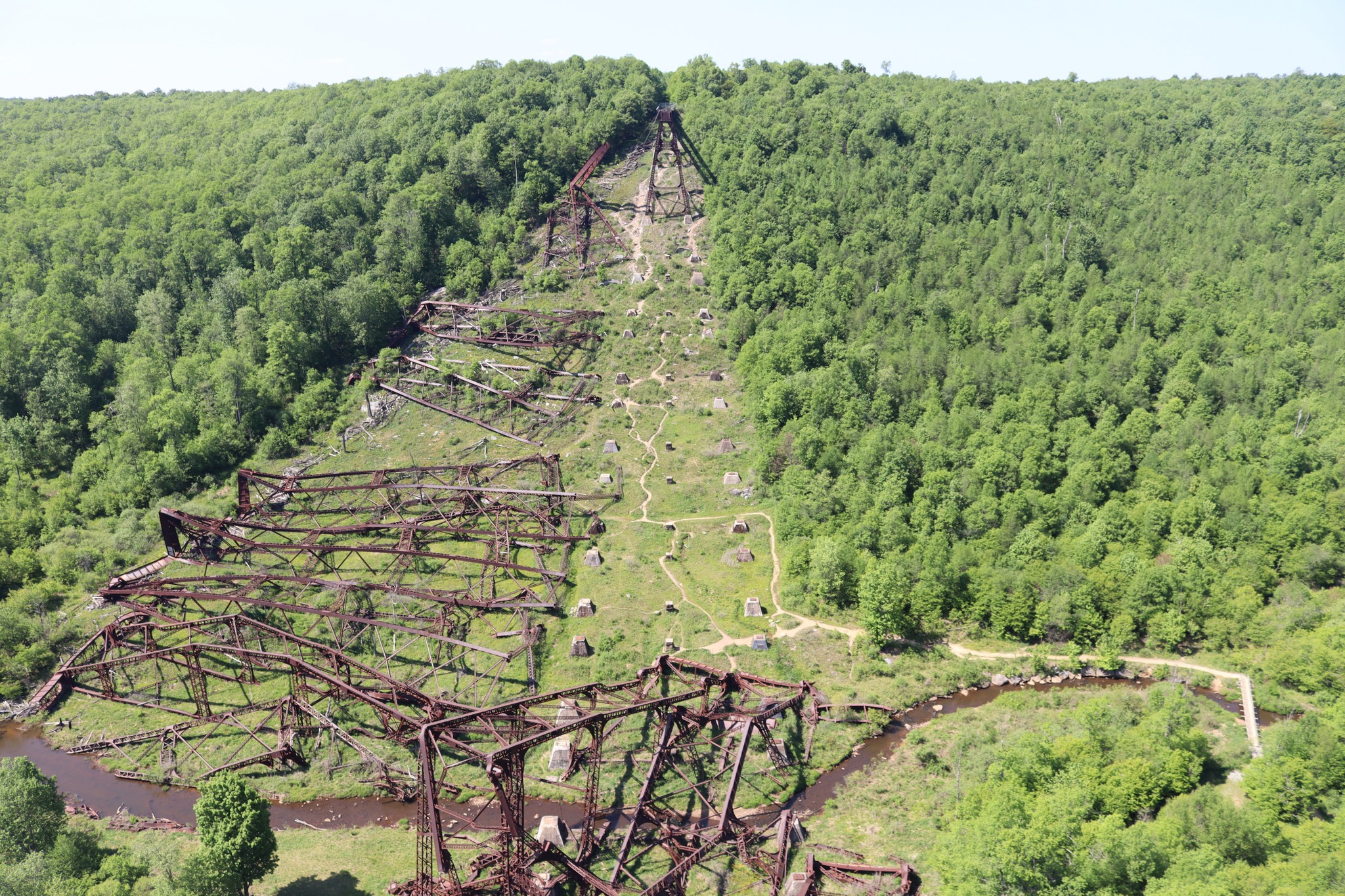
Bent bridge bents lie crumpled 300-feet below the former deck of the Kinzua Bridge after being toppled by a tornado in 2003.
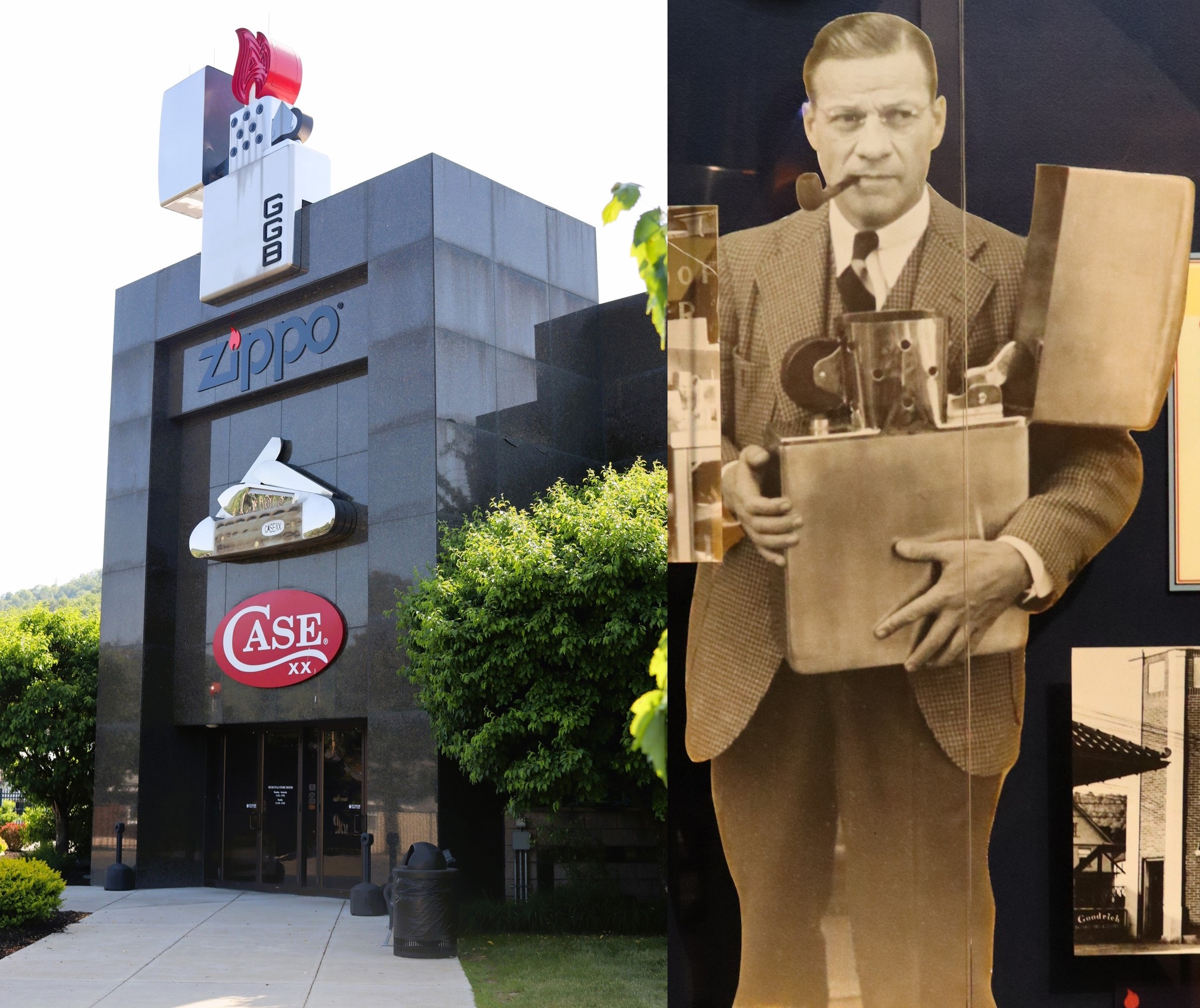
Bradford, Pennsylvania’s Zippo/Case Museum and Zippo inventor George G. Blaisdell.
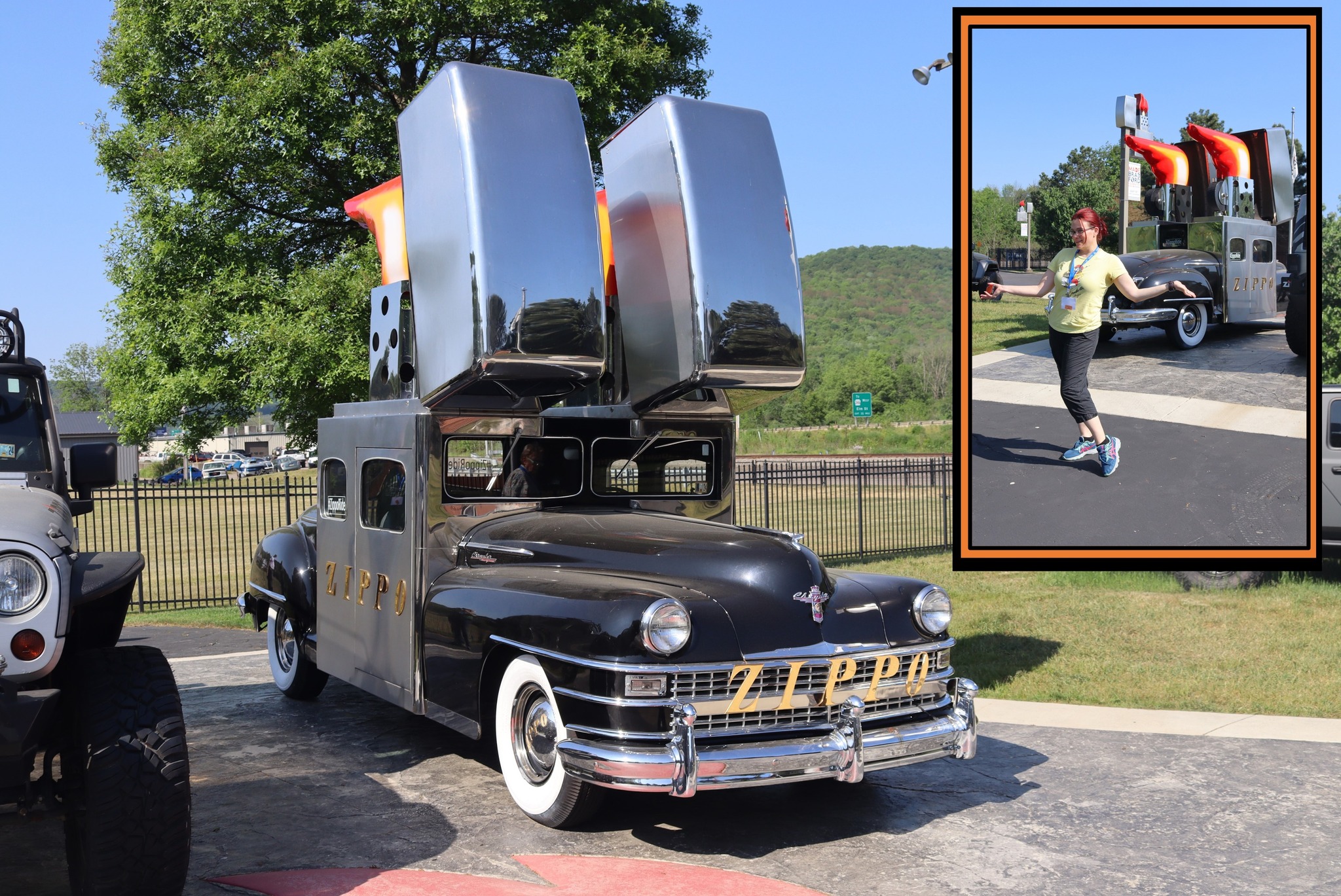
Parked at the Zippo/Case Museum in Bradford, Pennsylvania, the 1998 Zippo Car was fabricated from a 1947 Chrysler New Yorker to resemble the original 1947 Chrysler Saratoga Zippo Car.

Back on the Erie Bayfront for sunset dinner and drinks.
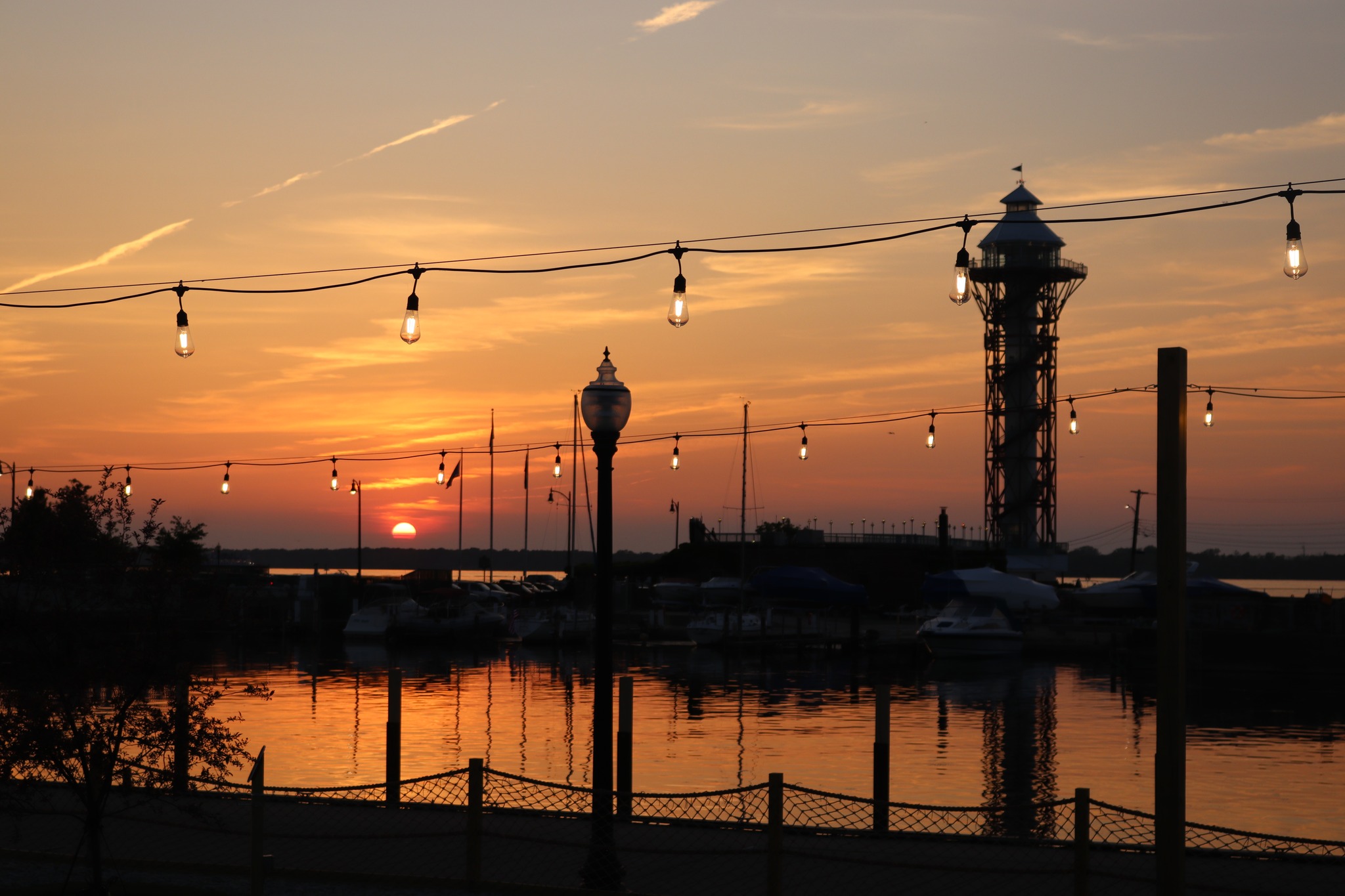
Ending the day in Erie, the Miami Beach of Pennsylvania.
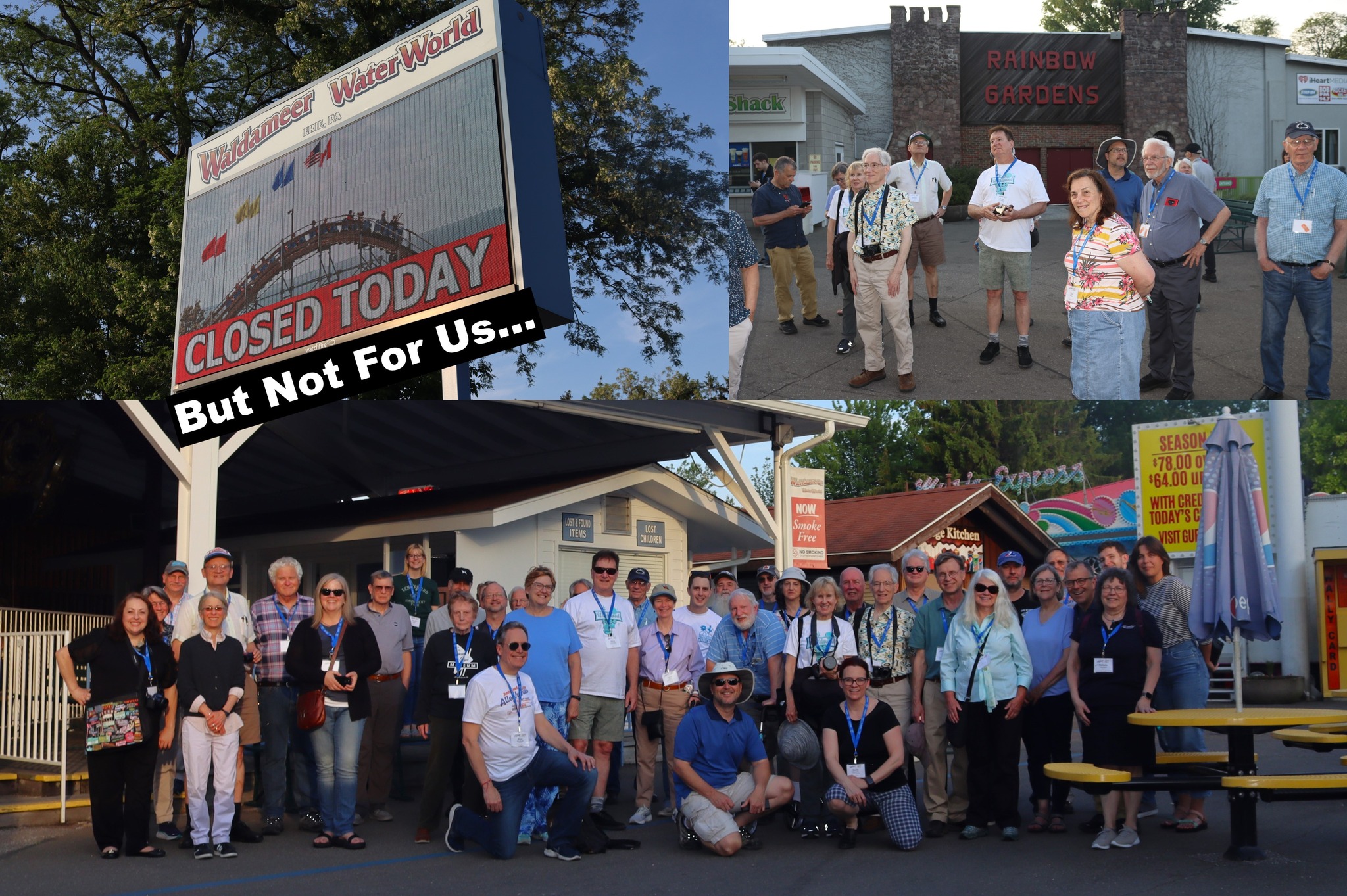
Erie’s Waldameer Amusement Park, Closed Today…but not for us. With the keys to the kingdom, the Society for Commercial Archeology has the park to themselves for a behind the season tour of one of America’s oldest operating trolley parks led by western Pennsylvania amusement park expert, Jennifer Sopko.
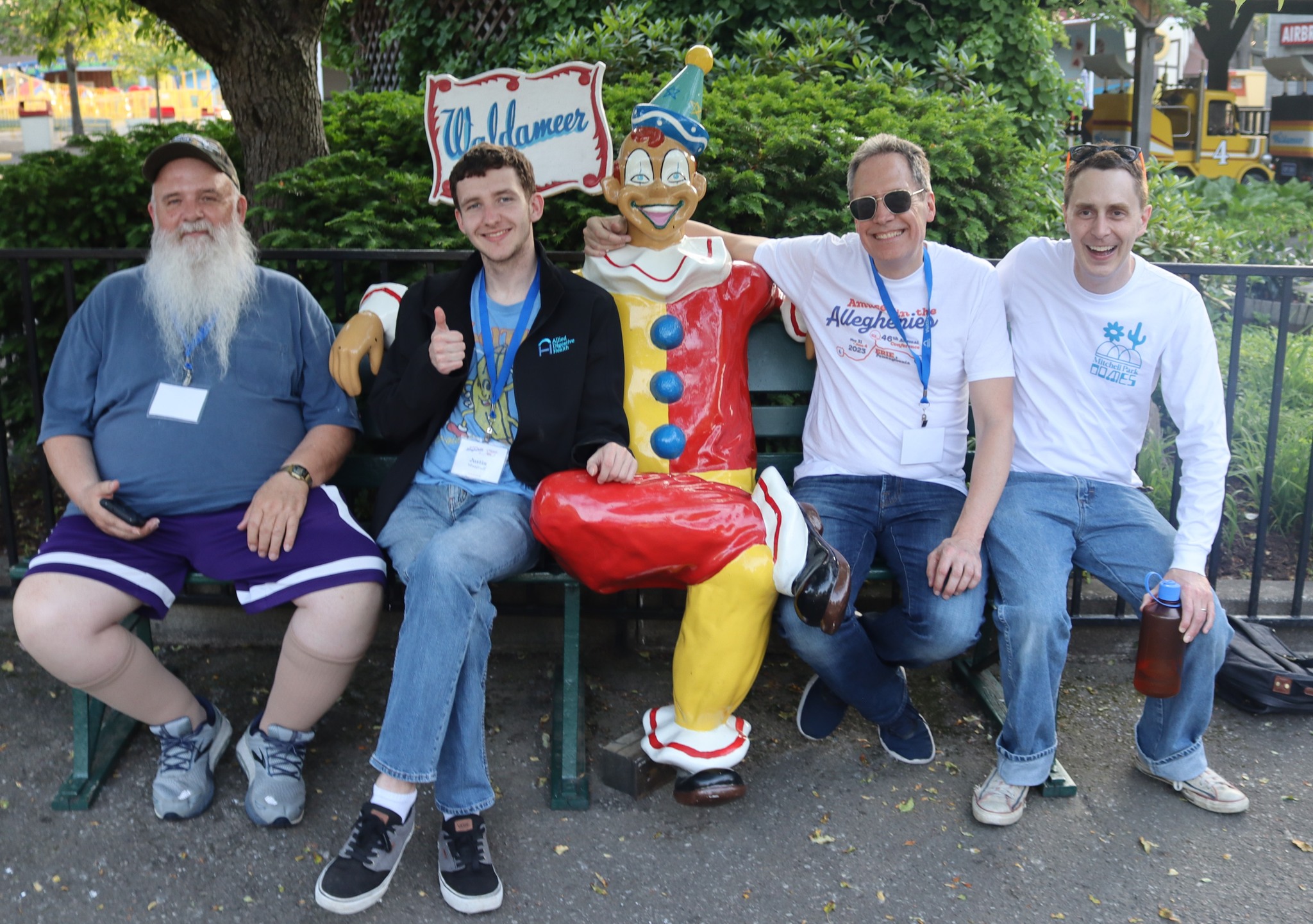
Clowning around at Erie’s Waldameer Amusement Park.

Waldameer Park’s Ravine Flyer II, and two Bill Tracy-designed dark rides; Whacky Shack and Pirate’s Cove.

Jennifer Sopko at Erie Vacationland institution, Sara’s Restaurant.

April and Greg at Sara’s Restaurant on Erie’s Presque Isle Peninsula.
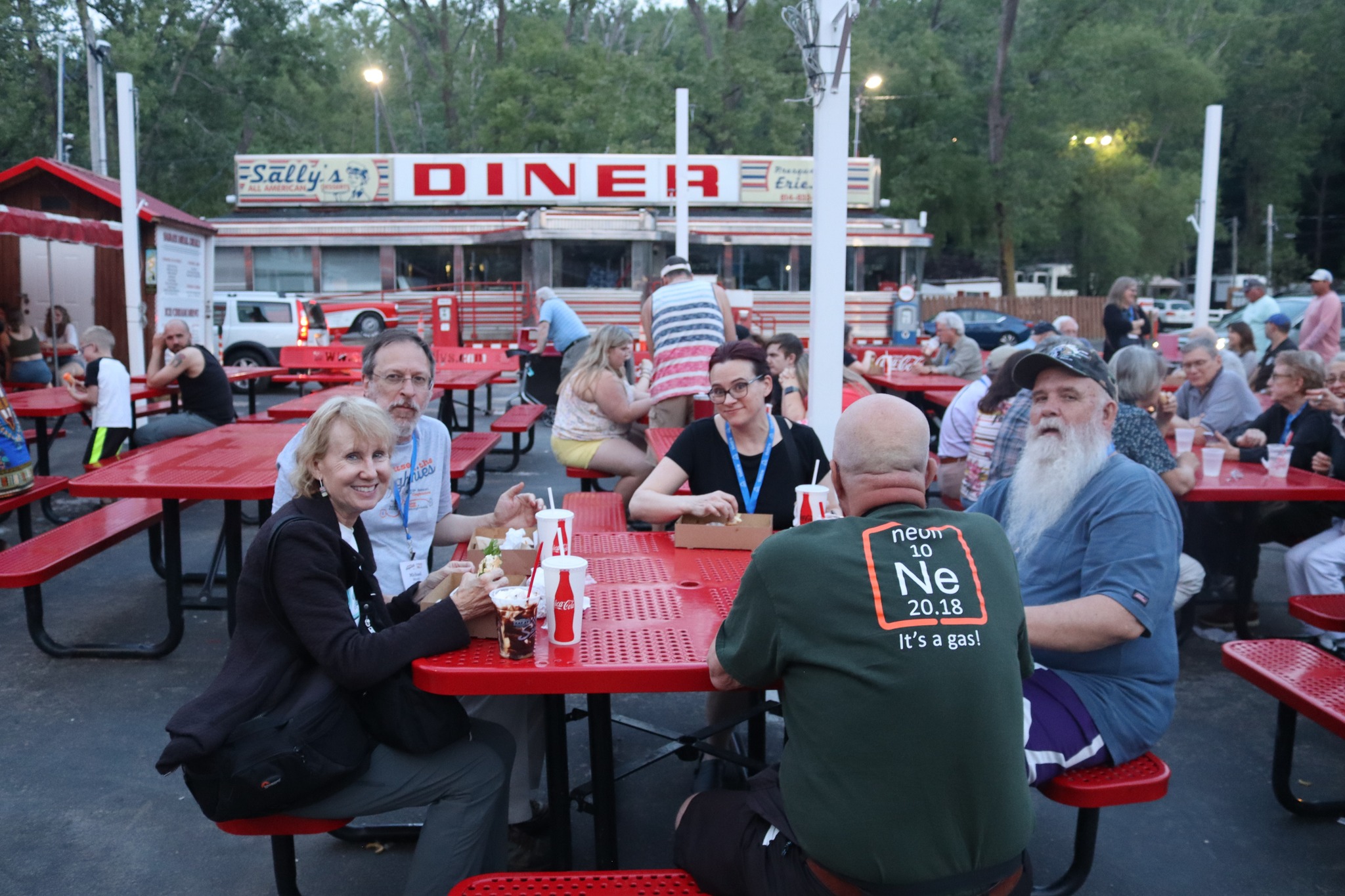
Sara’s Restaurant brought a 1957 Mountain View diner to Erie to become Sally’s All American Desert Diner. It began its life as Serro’s Diner in Irwin, Pennsylvania, then moved to Butler in 1976 to operate as Morgan’s Eastland Diner until its Erie relocation in 2003.
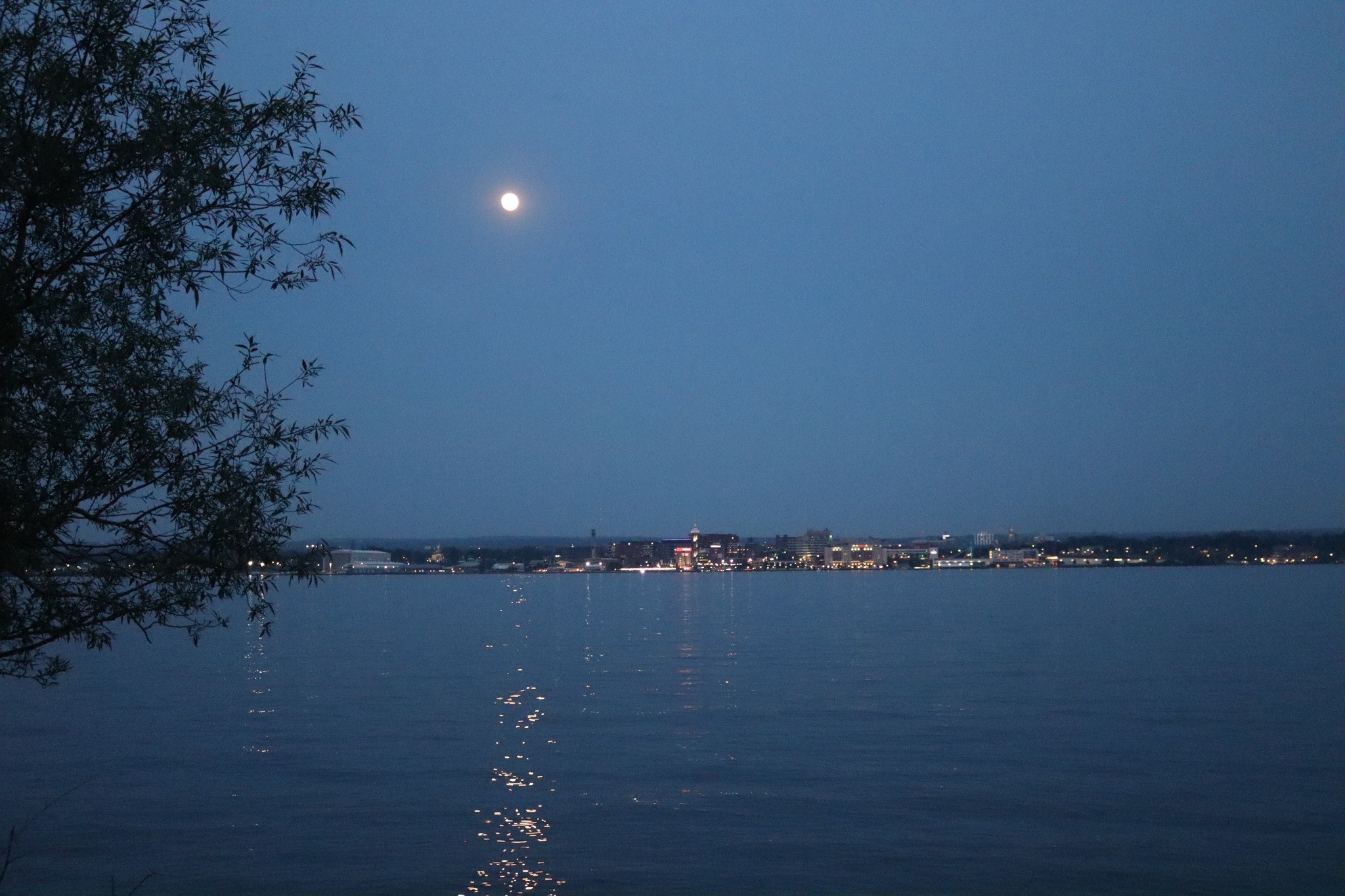
Moonlight over Erie.
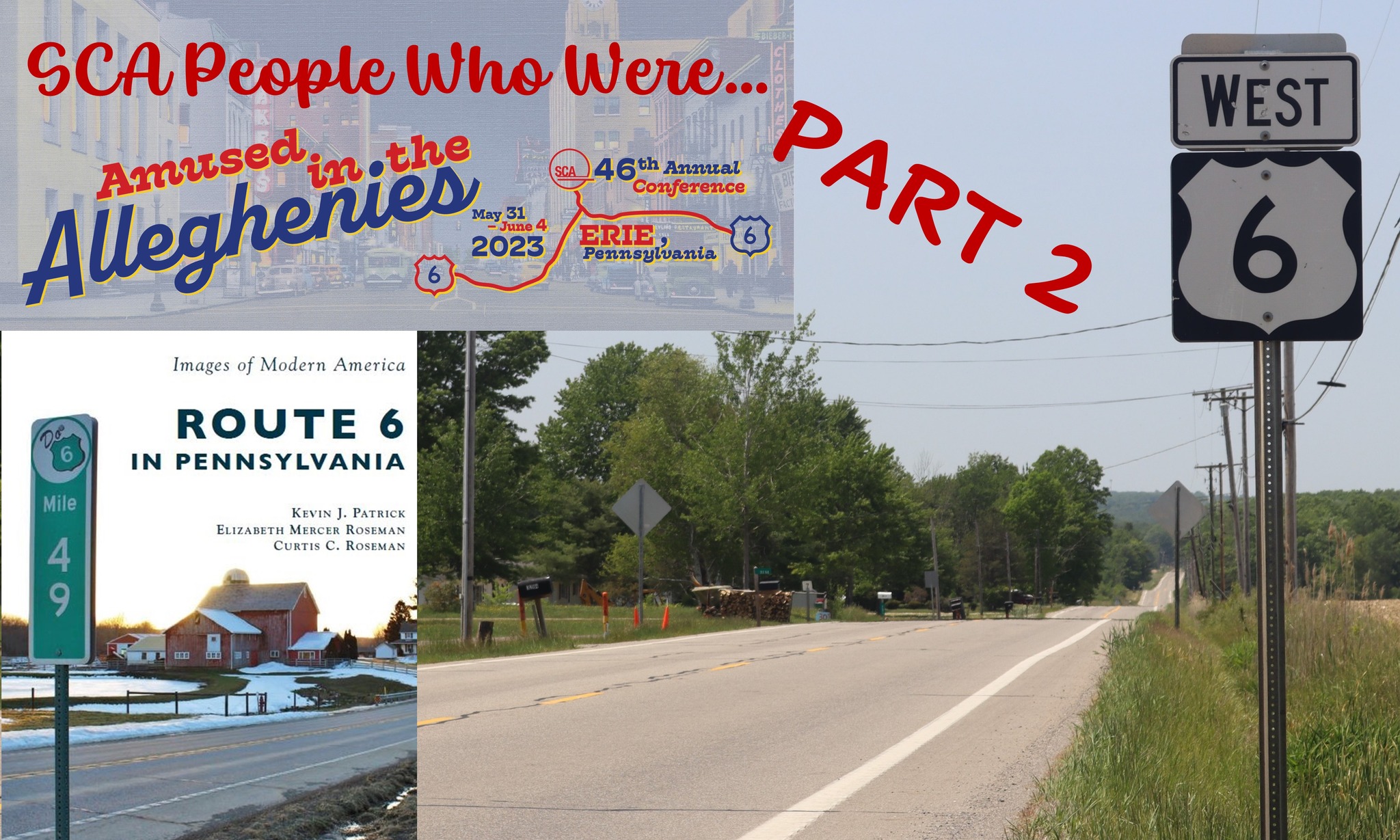
Armed with Patrick and Roseman’s “Route 6 in Pennsylvania,” the Society for Commercial Archeology leaves Erie, Pennsylvania westbound on US 6 for Cleveland, Ohio.
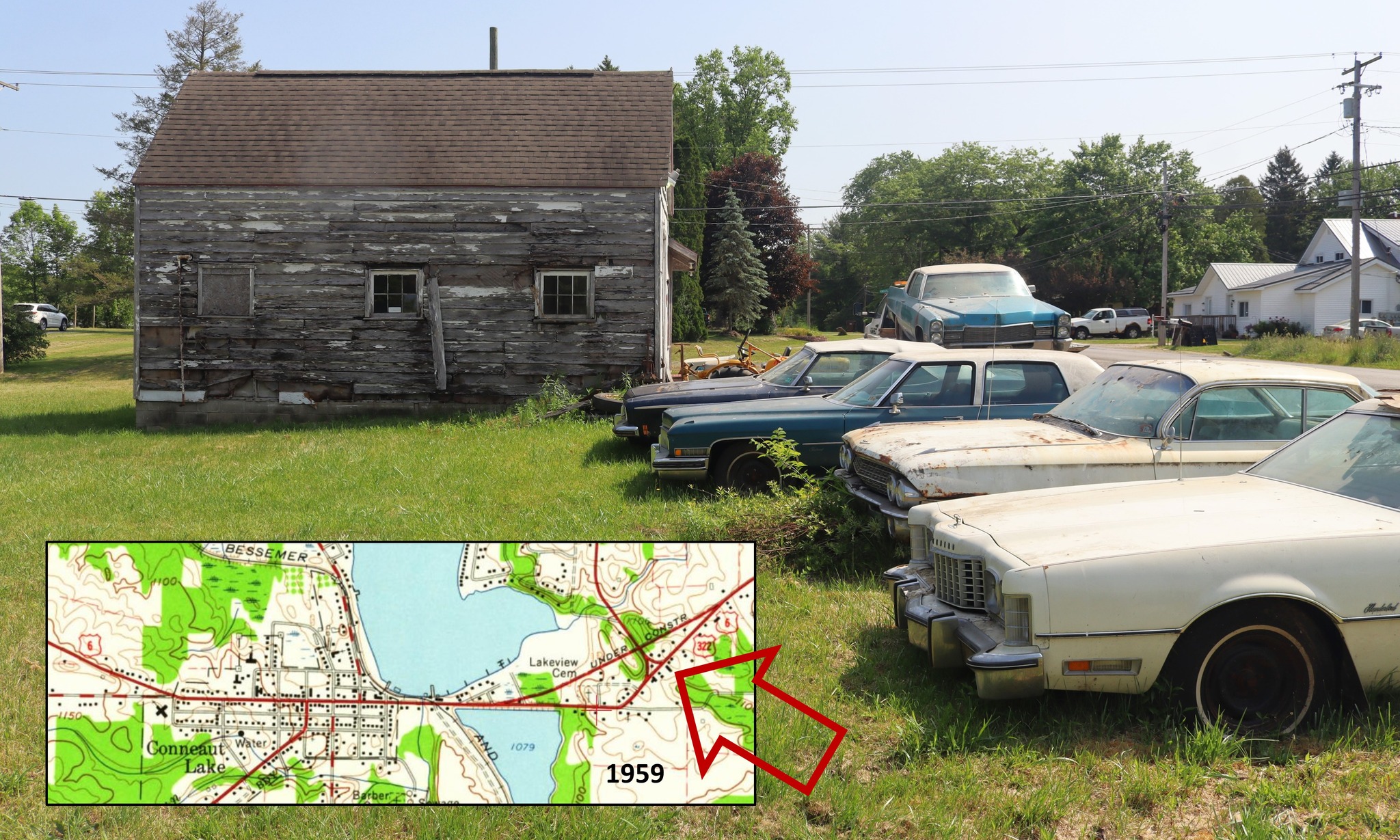
The banked ramp, triangle T intersection built for the intersection of US 6 and PA Route 18 was bypassed with the building of four-lane Route 6 between Meadville and Conneaut Lake, Pennsylvania, in 1959. The gas station that once operated inside the triangle survives with a collection of vintage Caddies and T-birds.
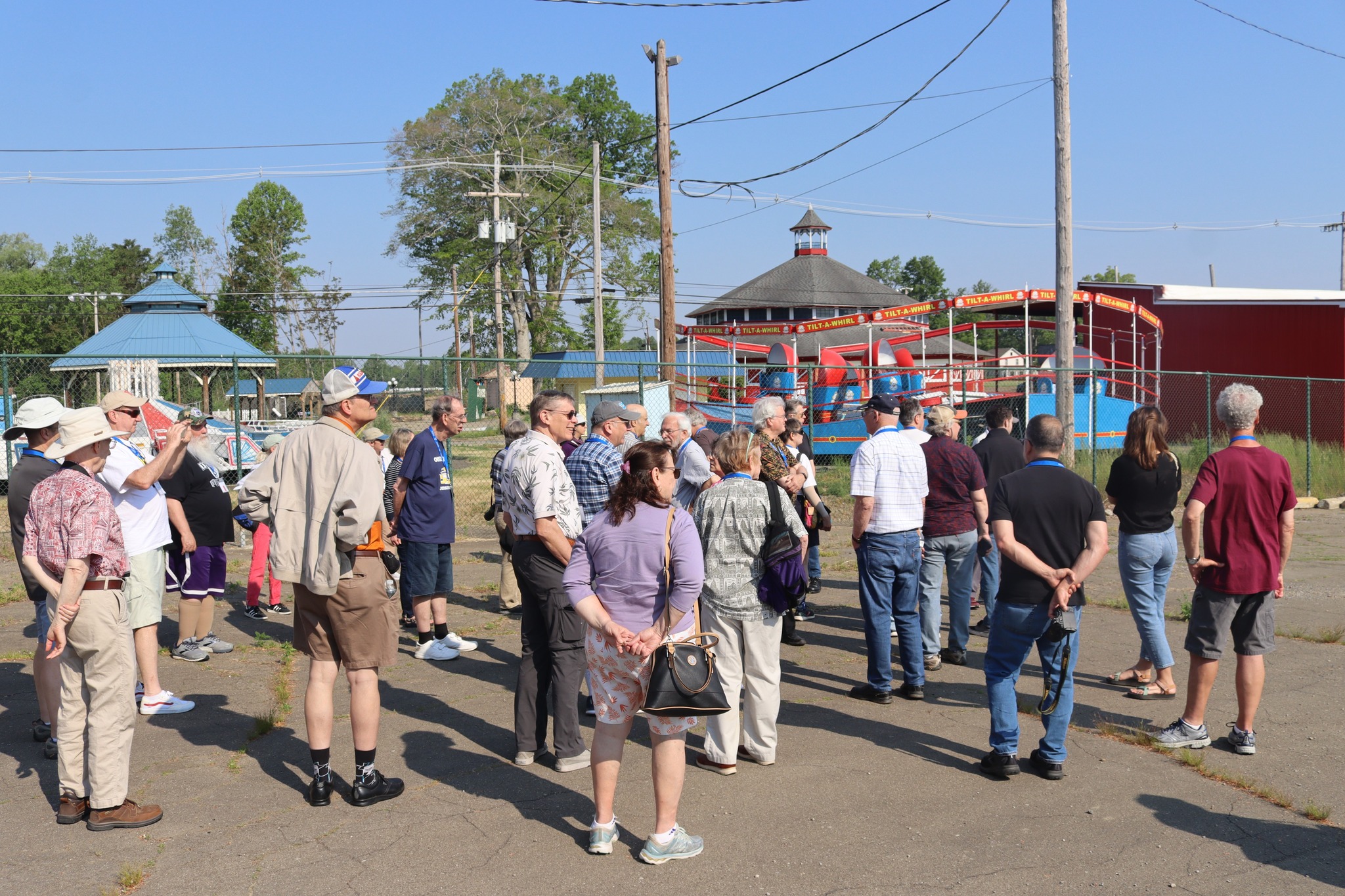
Brian Butko leads the discussion at the remains of Conneaut Lake Park, opened in 1892 at the end of a Bessemer and Lake Erie Railroad branch line. A western Pennsylvania amusement park institution for over a century, Conneaut Lake Park was unable to make a viable transition into the 21st century. The Carousel Building and remnant bits of Kiddieland are all that survive.
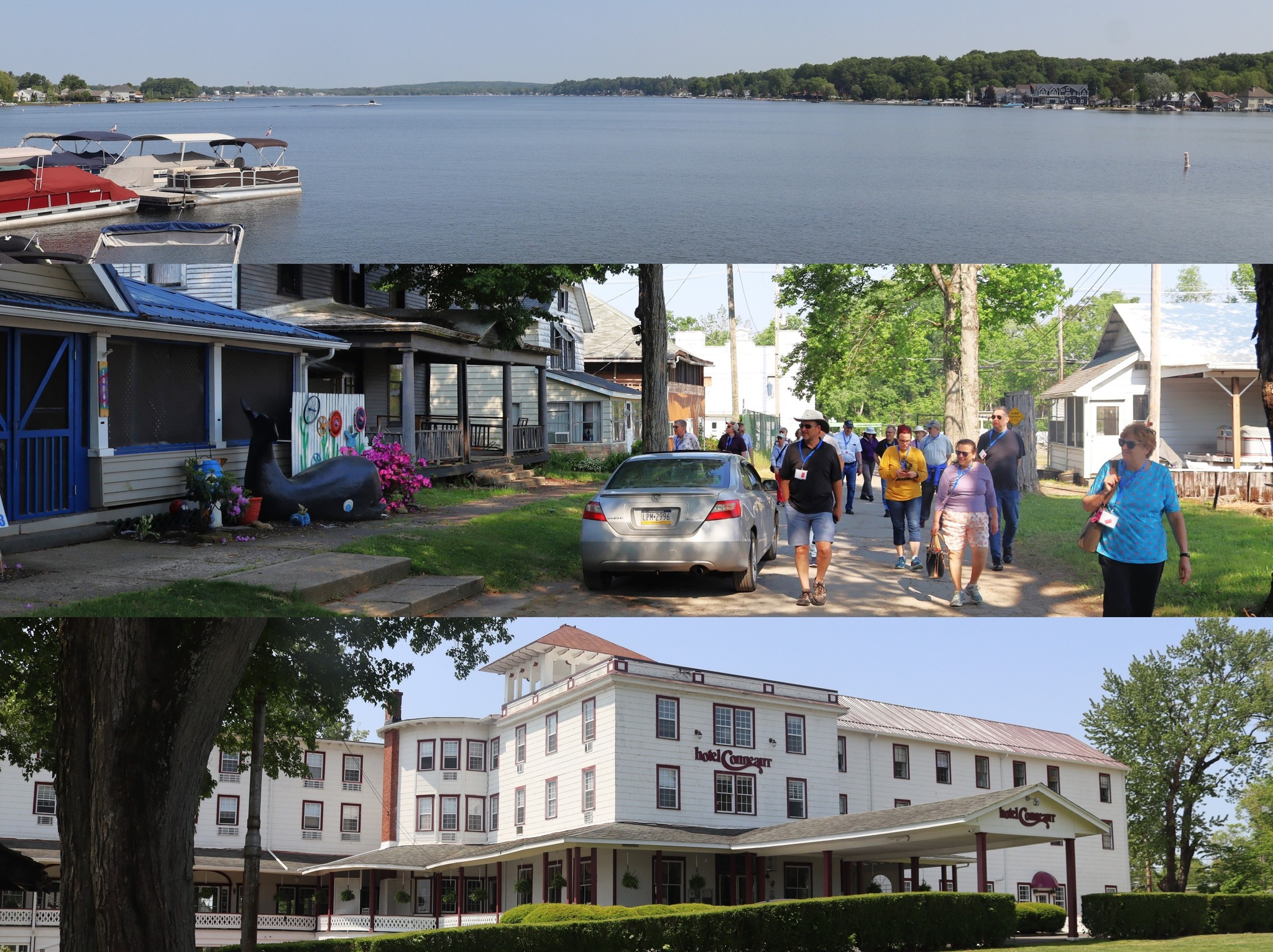
A gift from the glaciers, Conneaut Lake is the largest natural in Pennsylvania. It was colonized as a summer retreat in the 1870s with Exposition Park, the precursor to Conneaut Lake Park, opening in 1892. Still operating Hotel Conneaut opened on the lakeshore in 1903.
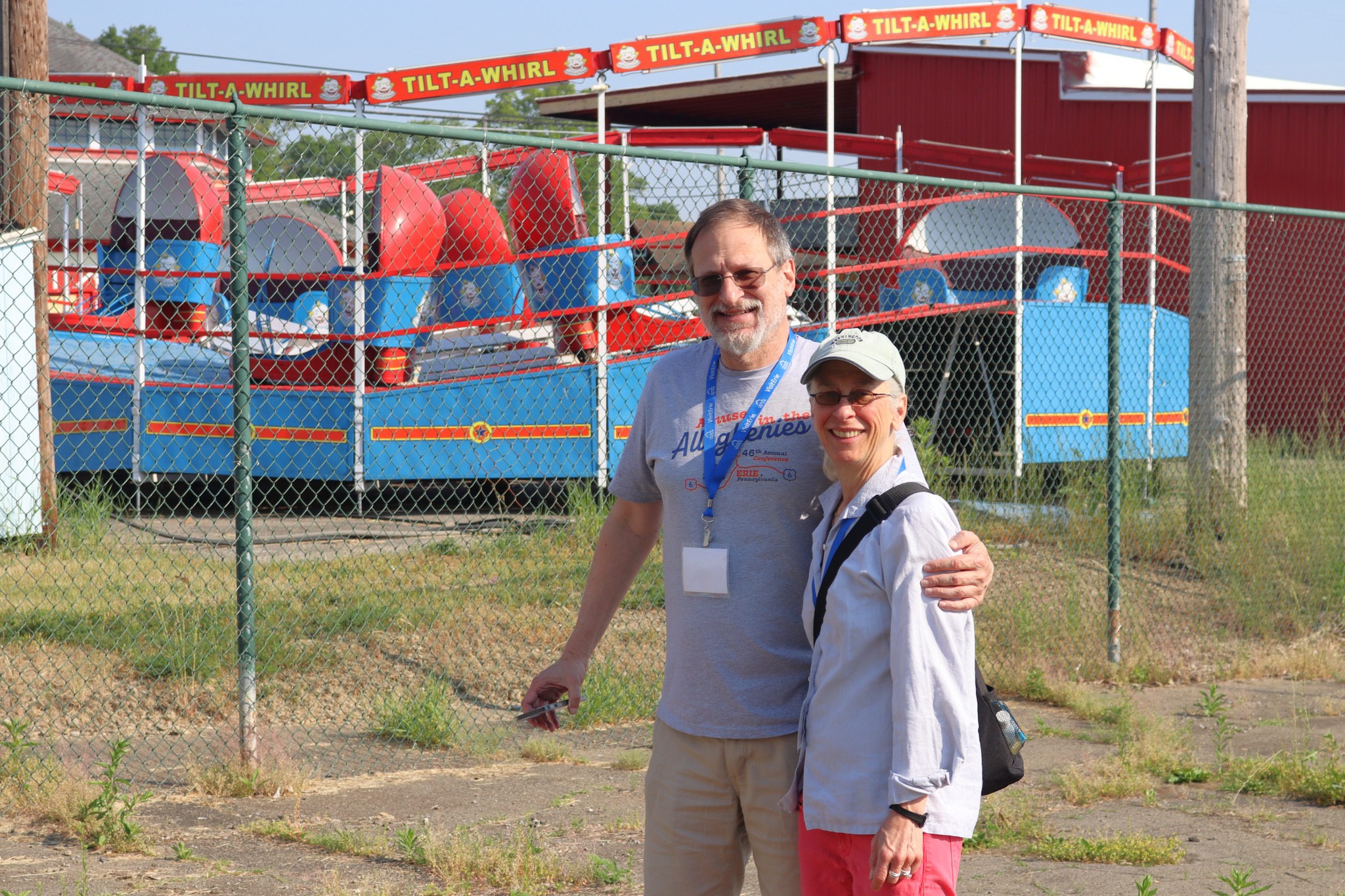
SCA president Michael Hirsch, and past-president Nancy Sturm, at Conneaut Lake Park, Pennsylvania.
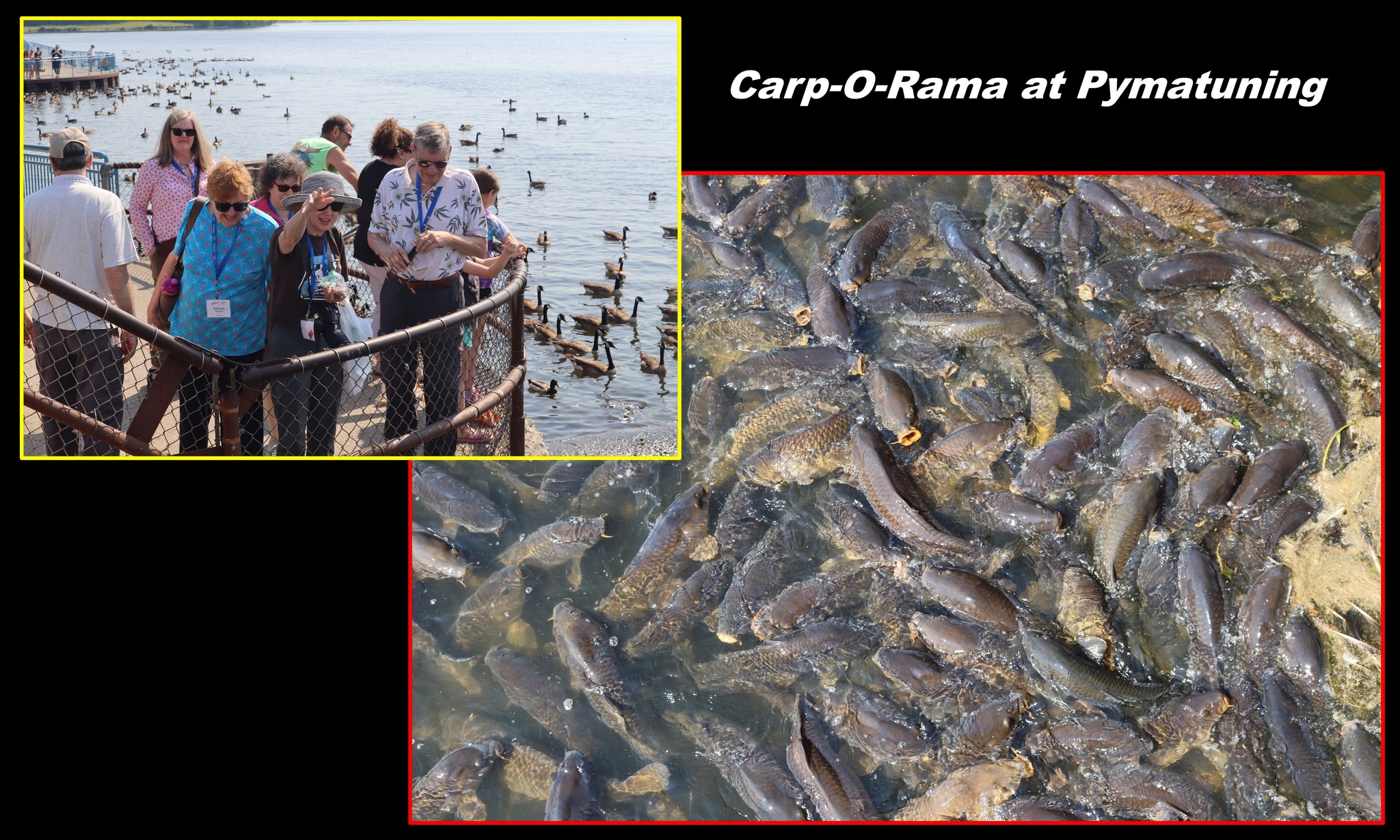
With a busload of SCA members added to the list, Pymatuning Reservoir’s Linesville Spillway attracts more tourists than the Liberty Bell in Philadelphia. The main attraction is more giant carp than you would ever want to see heaped up in one location due to a quirk in the design of the reservoir that concentrates nutrients from the upper lake at the oxygenated water of the spillway. Carp figured this out soon after water started backing up behind the dam in 1934.
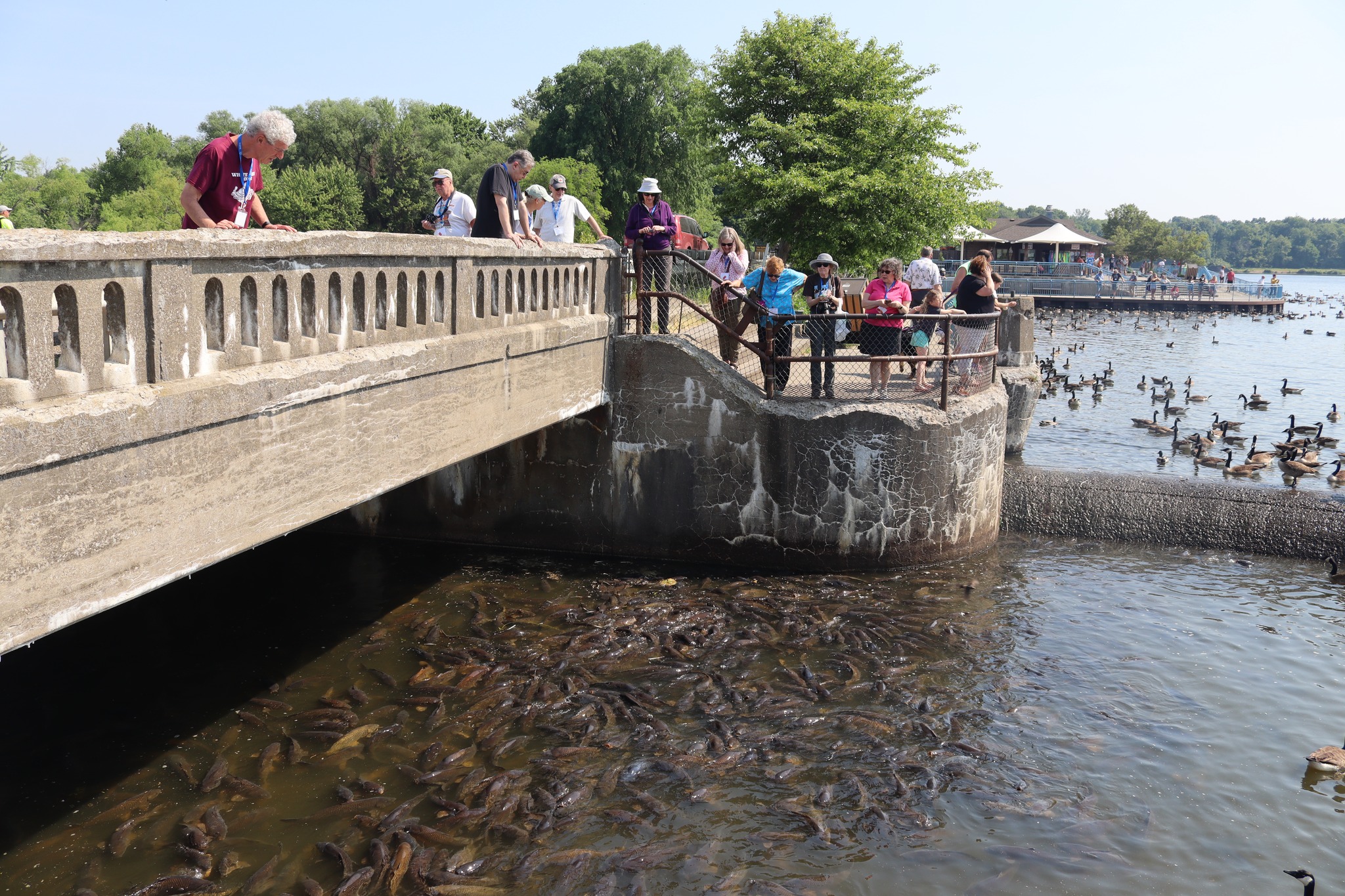
Tourists started chucking bread to carp congregating at Pymatuning’s Linesville Spillway soon after the dam was completed in 1934. This only attracted more fish, which attracted more tourists, which attracted locals selling stale bread to tourists to feed the fish. Ducks and Canadian geese soon arrived to snatch the bread from the fish.
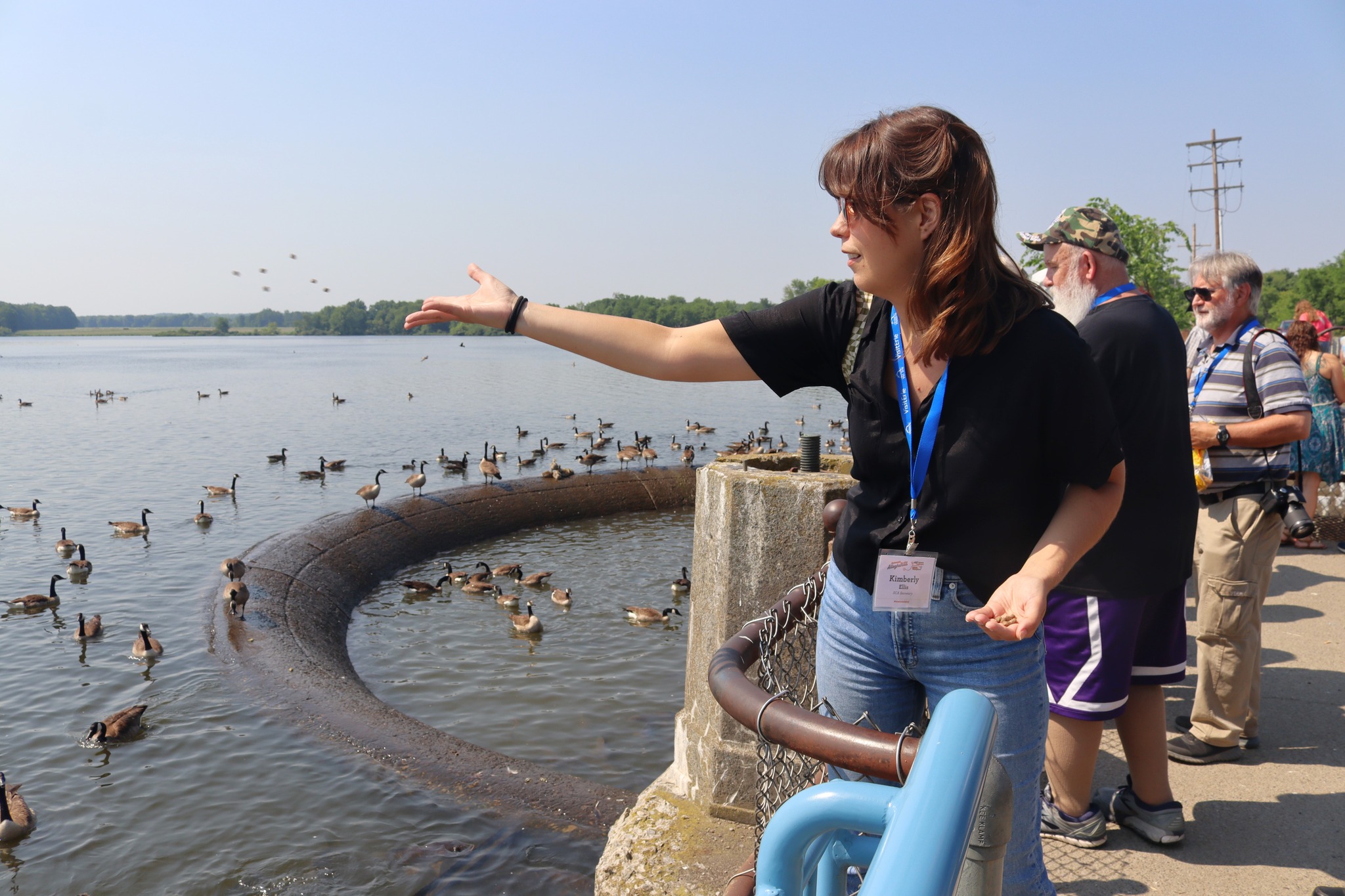
SCA board member Kimberly Ellis adds to the feeding frenzy at Pymatuning’s Linesville Spillway.
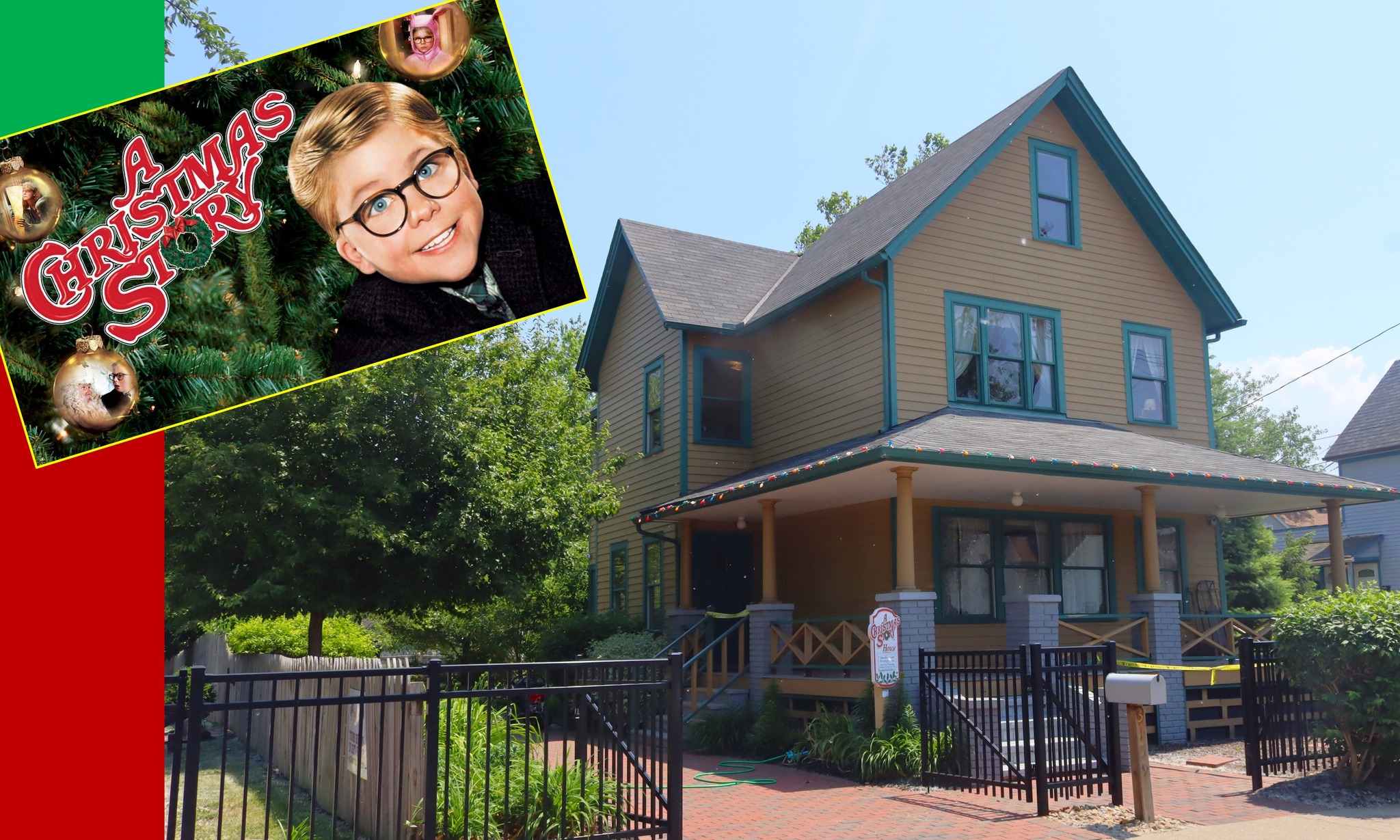
A turn-of-the-century vernacular home in Cleveland, Ohio’s Tremont neighborhood is as unlikely a major tourist attraction as carp congregating at Pymatuning Reservoir, or a collapsed railroad bridge in the remote Pennsylvania Wilds, but there it is roping in 80,000 people every year to see the house where the 1983 cult-class holiday movie, “A Christmas Story” was filmed.
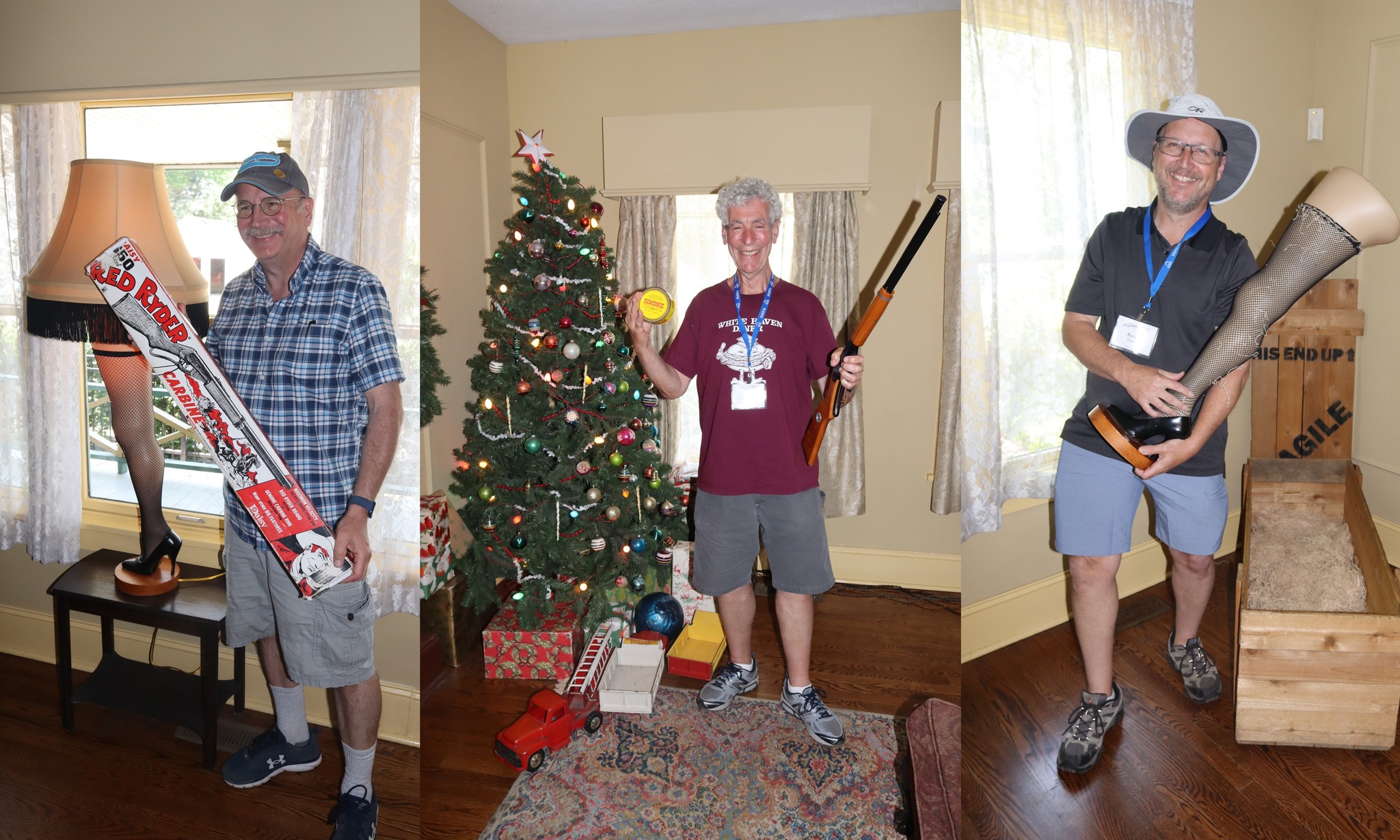
A BB gun, leg lamp, blue bowling ball, can of Simoniz, and a toy zeppelin (Whoopie! That’s mine!) assembled in a house where a kid’s mouth was washed out with soap splits the SCA into those who have seen the movie, those who don’t get it, and those who have seen the movie and still don’t get it. As a cottage industry, the “A Christmas Story” enterprise sprawls across four Tremont houses used for a museum, a giant gift shop for all your leg lamp needs, and the Bumpus House where you can spend the night.
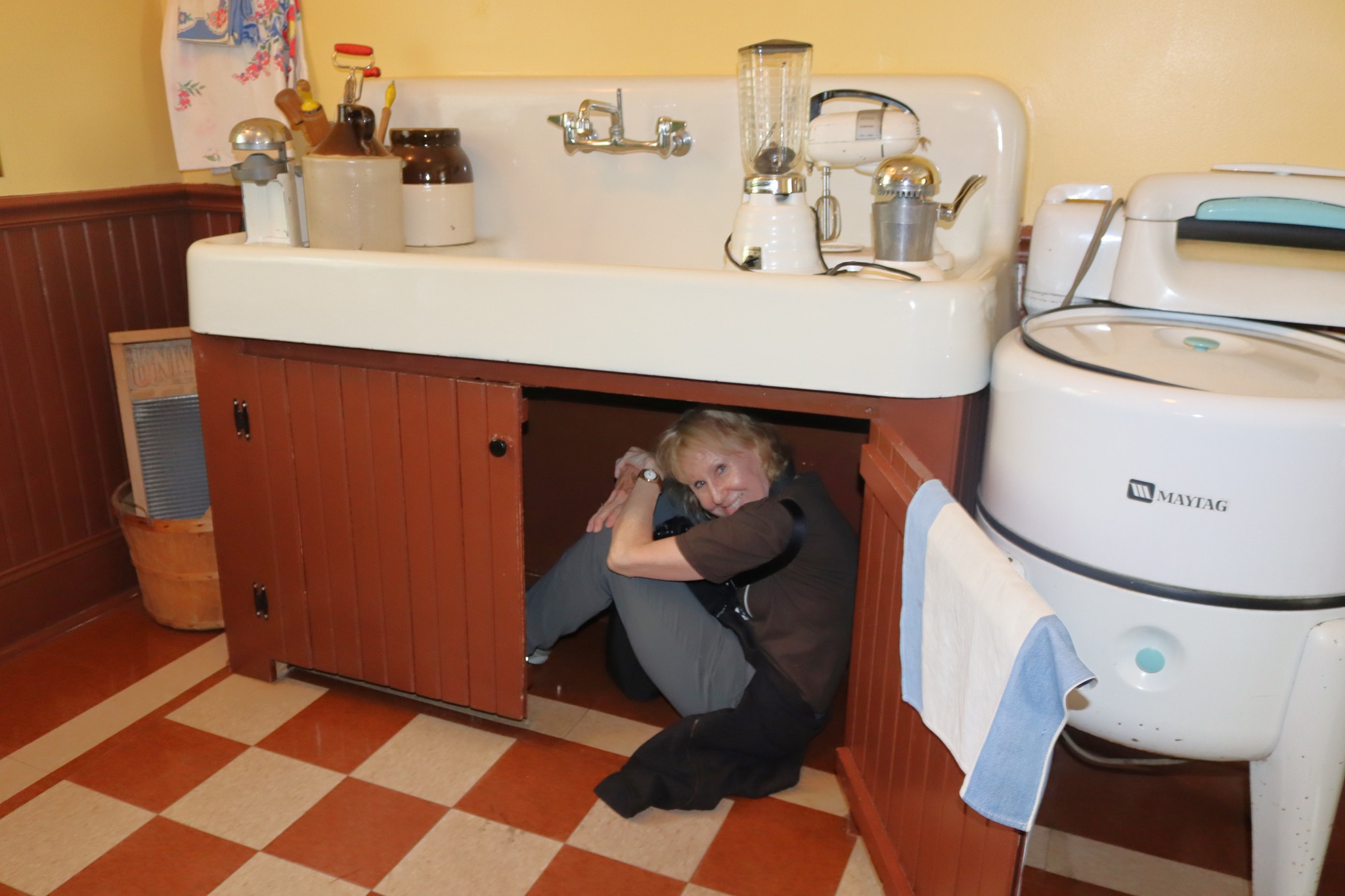
Daddy’s going to kill Ralphie.
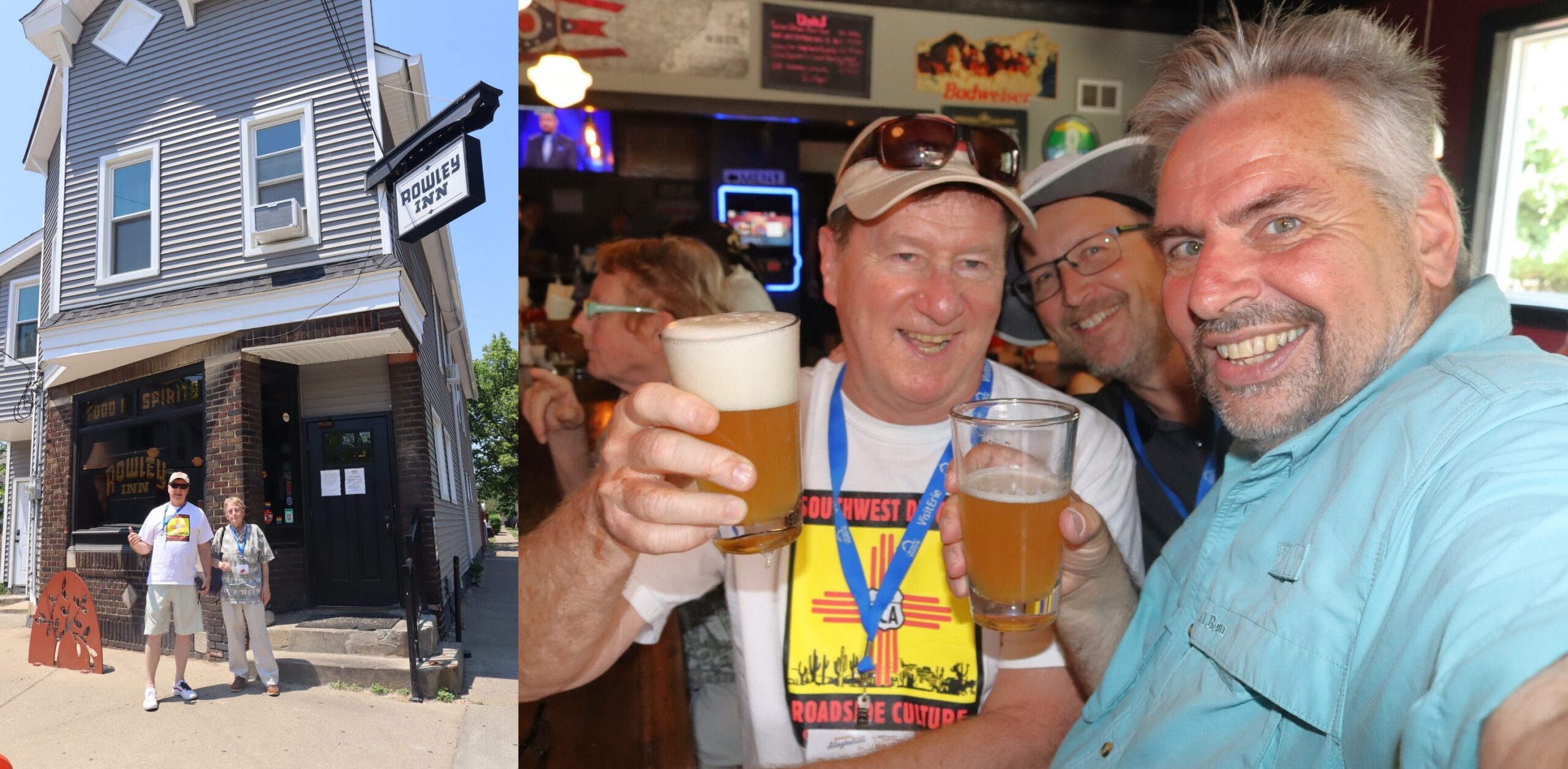
Celebrating the real birthplace of “A Christmas Story” House; the bar across the street where the homeowner accepted a $20,000 check in exchange for letting his house become an American movie icon. Replica leg lamp distributor Brian Jones bought “A Christmas Story” House in an E-Bay auction in 2006, turning the movie icon into a Cleveland tourist attraction that rivals the Rock and Roll Hall of Fame.
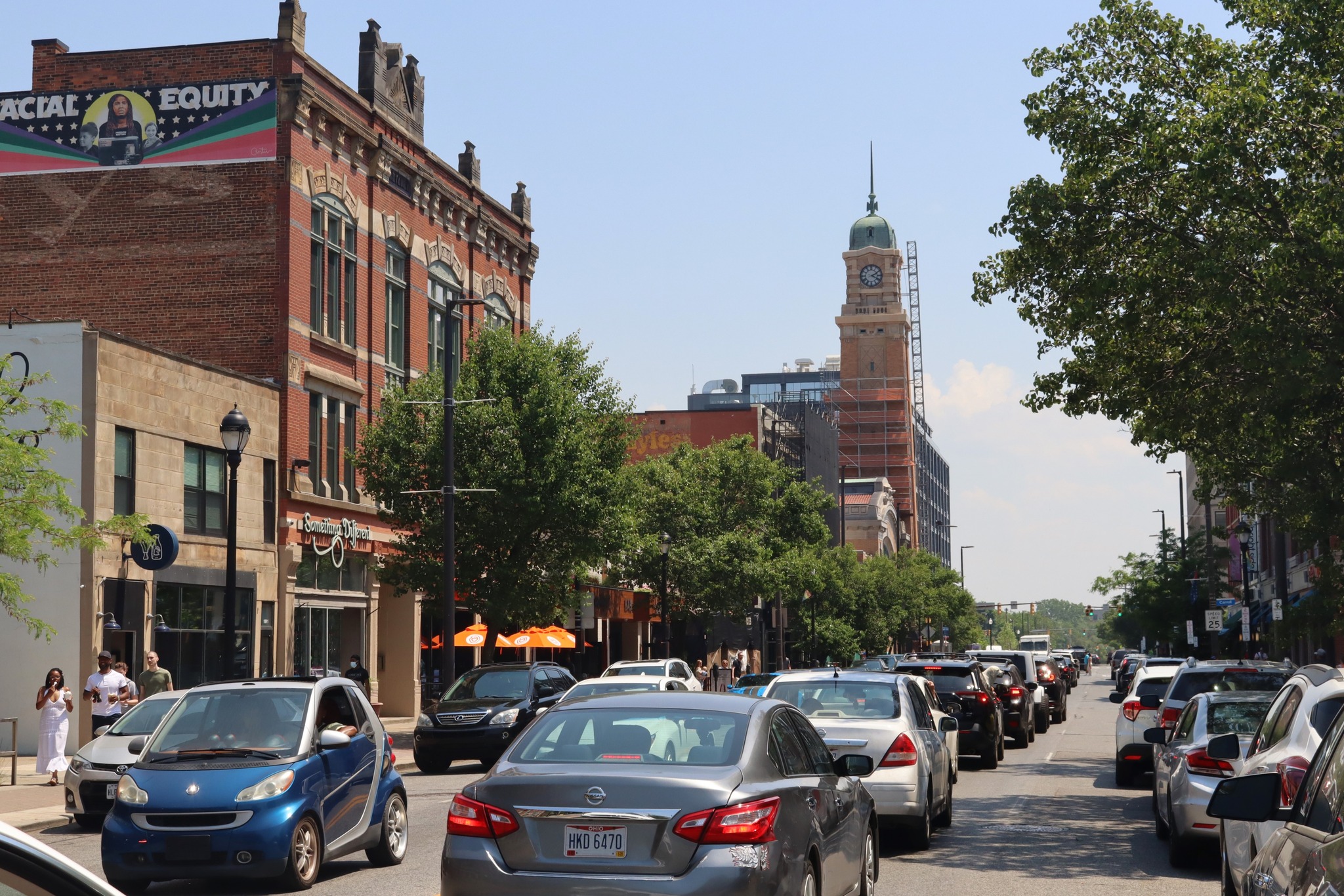
Lunch time at the West Side Market in Cleveland’s gentrifying Ohio City neighborhood.
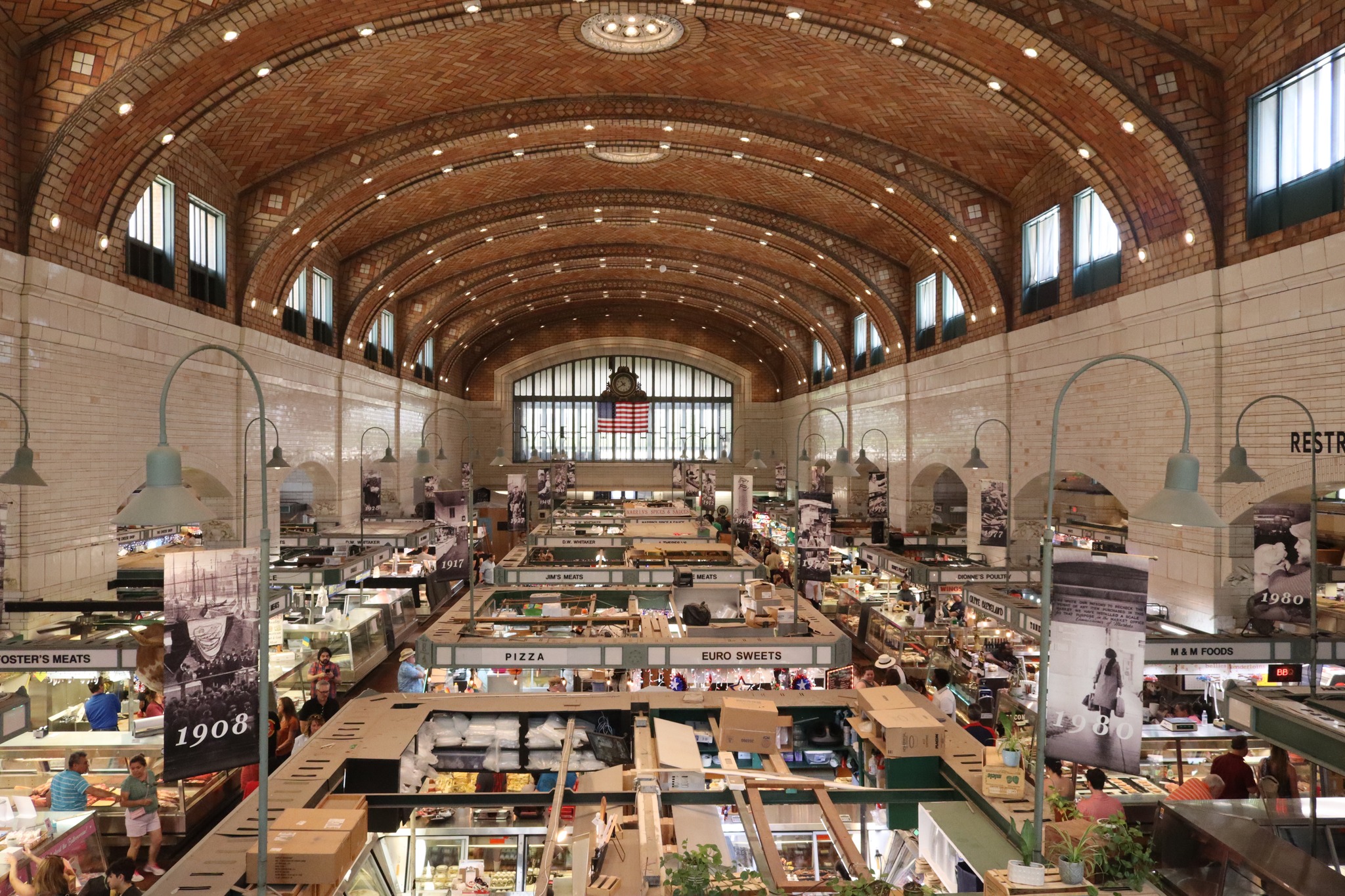
Opened in 1912 to sell meat, fish, produce and other perishables, Cleveland’s West Side Market was roofed over with self-supporting Guastavino tiles.
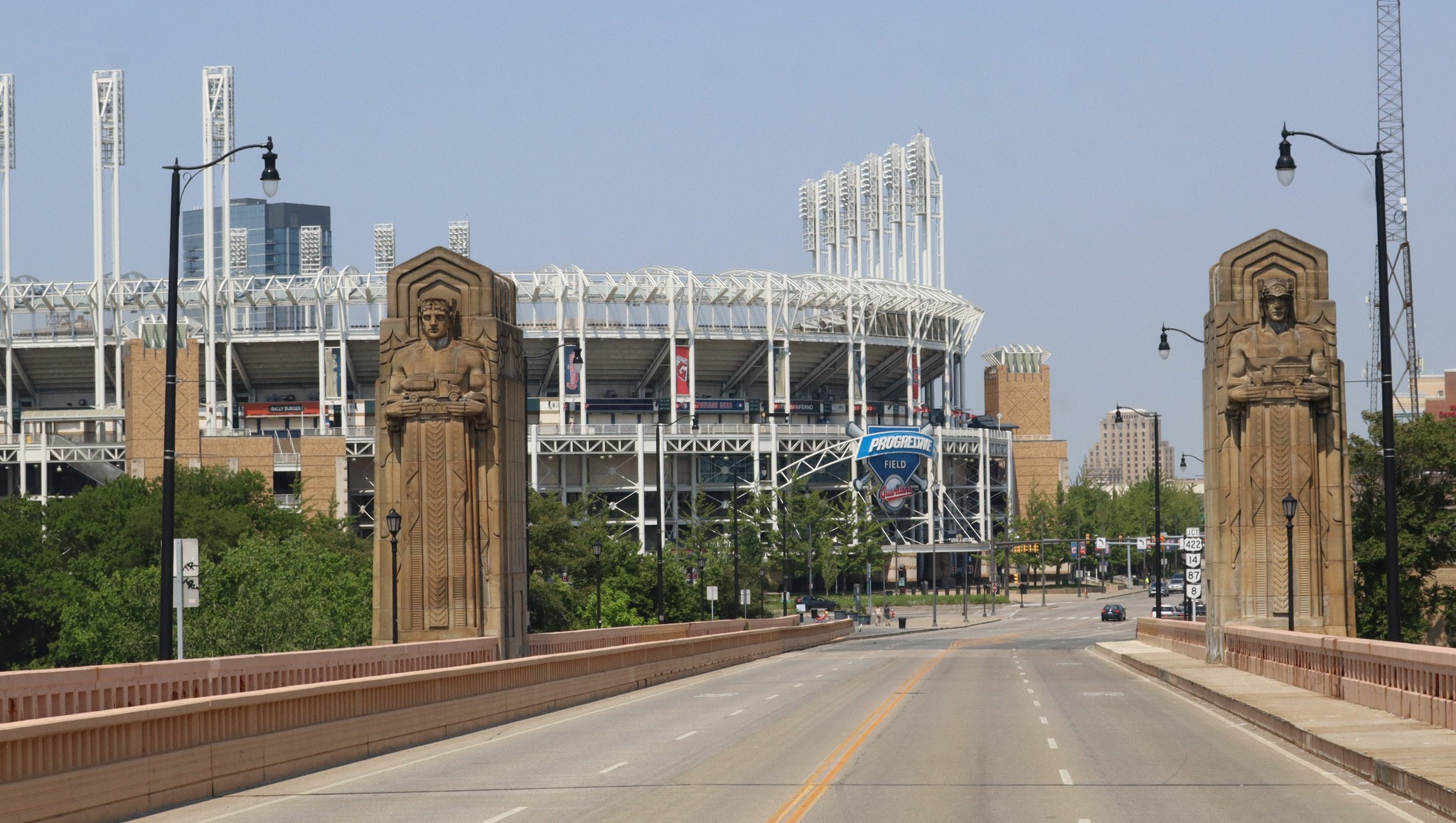
Vehicle toting “Guardians of Traffic” stand as Art Deco titans at either end of Cleveland’s 1932 Lorain-Carnegie Bridge. The bridge was renamed the Hope Memorial Bridge after Cleveland native Bob Hope’s father who as a stonemason helped build the Guardians that more recently have inspired the new name to the Cleveland Indians.

Cleveland’s downtown retail district lined up along Euclid Avenue from Public Square where the Terminal Tower was raised as the tallest building outside New York City in 1930, and Playhouse Square where four major Beaux Arts theaters were built in the 1920s. Six department stores anchored the retail district, including Higbee’s highlighted in “A Christmas Story.” Cleveland’s last downtown department store, Higbee’s became Dillard’s in 1992, and a gambling casino in 2002. Three of the remaining department store buildings, May, Taylor’s, and Halle’s, have been rehabbed into apartments.
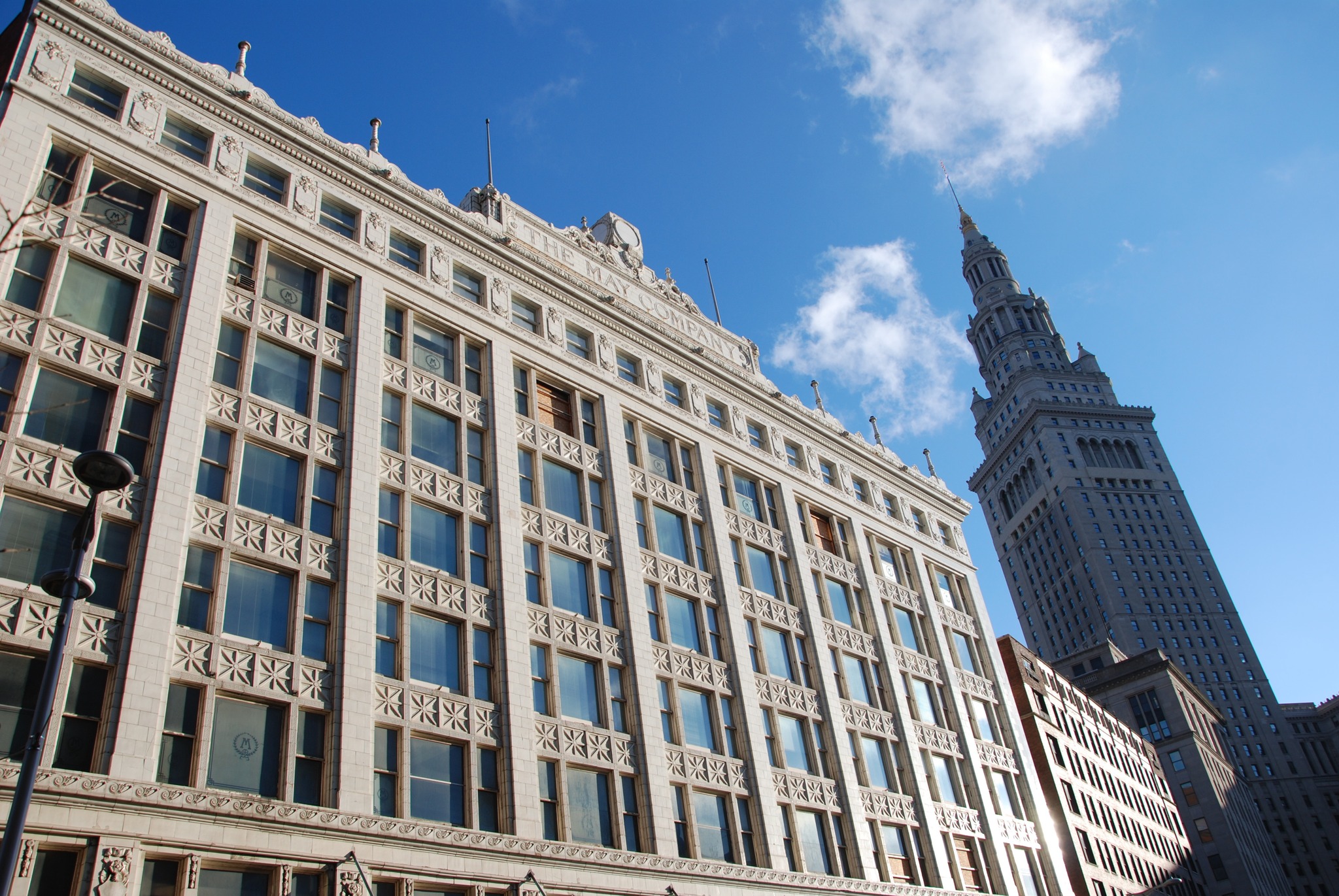
The May Company operated its terra cotta clad department store in downtown Cleveland from 1915 to 1993.
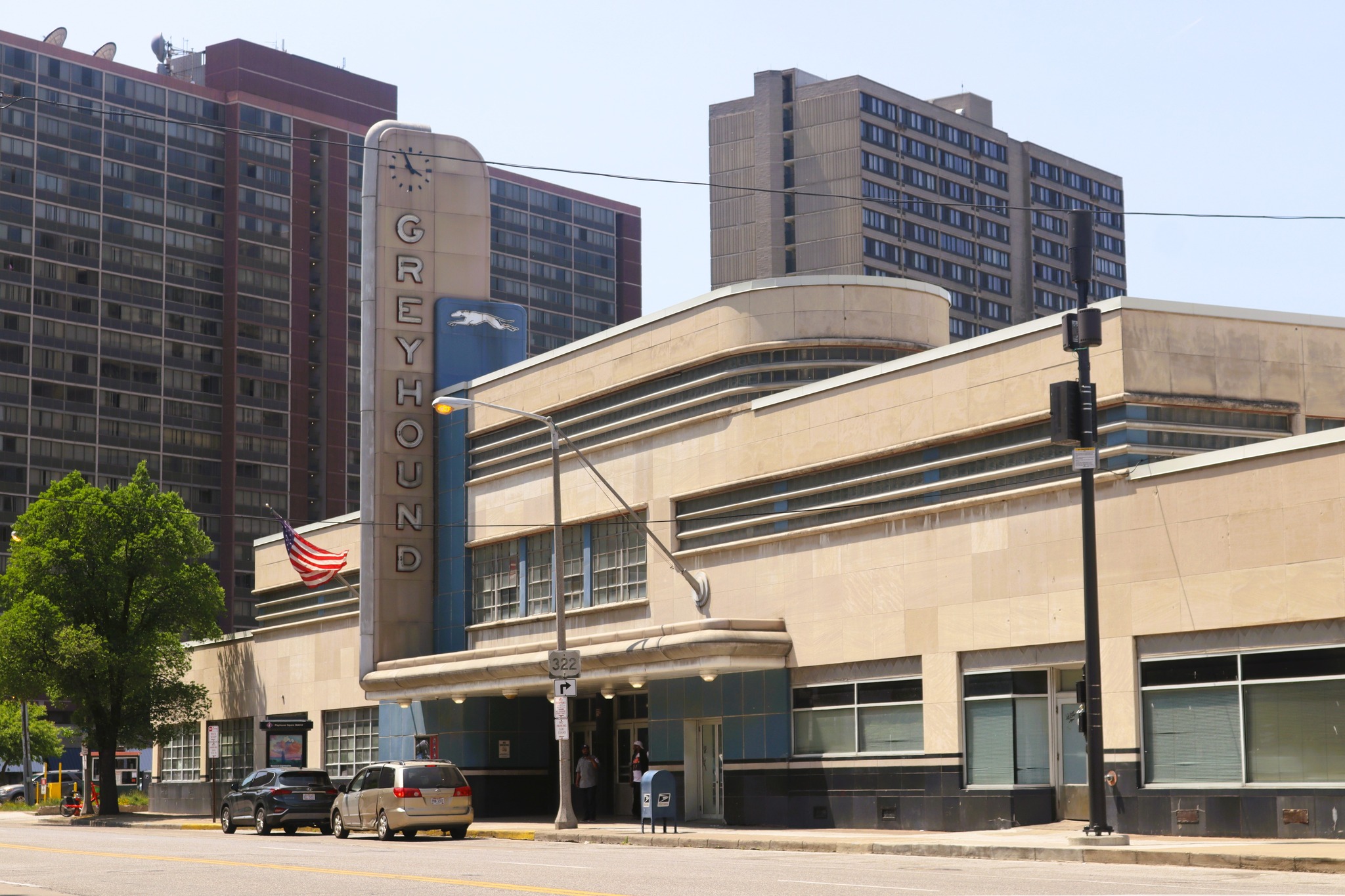
The Greyhound Bus Terminal on Chester Avenue in downtown Cleveland is a 1938 Streamline Moderne masterpiece designed by William S. Arrasmith, the architect who completed over 60 similar bus stations with only a handful surviving.
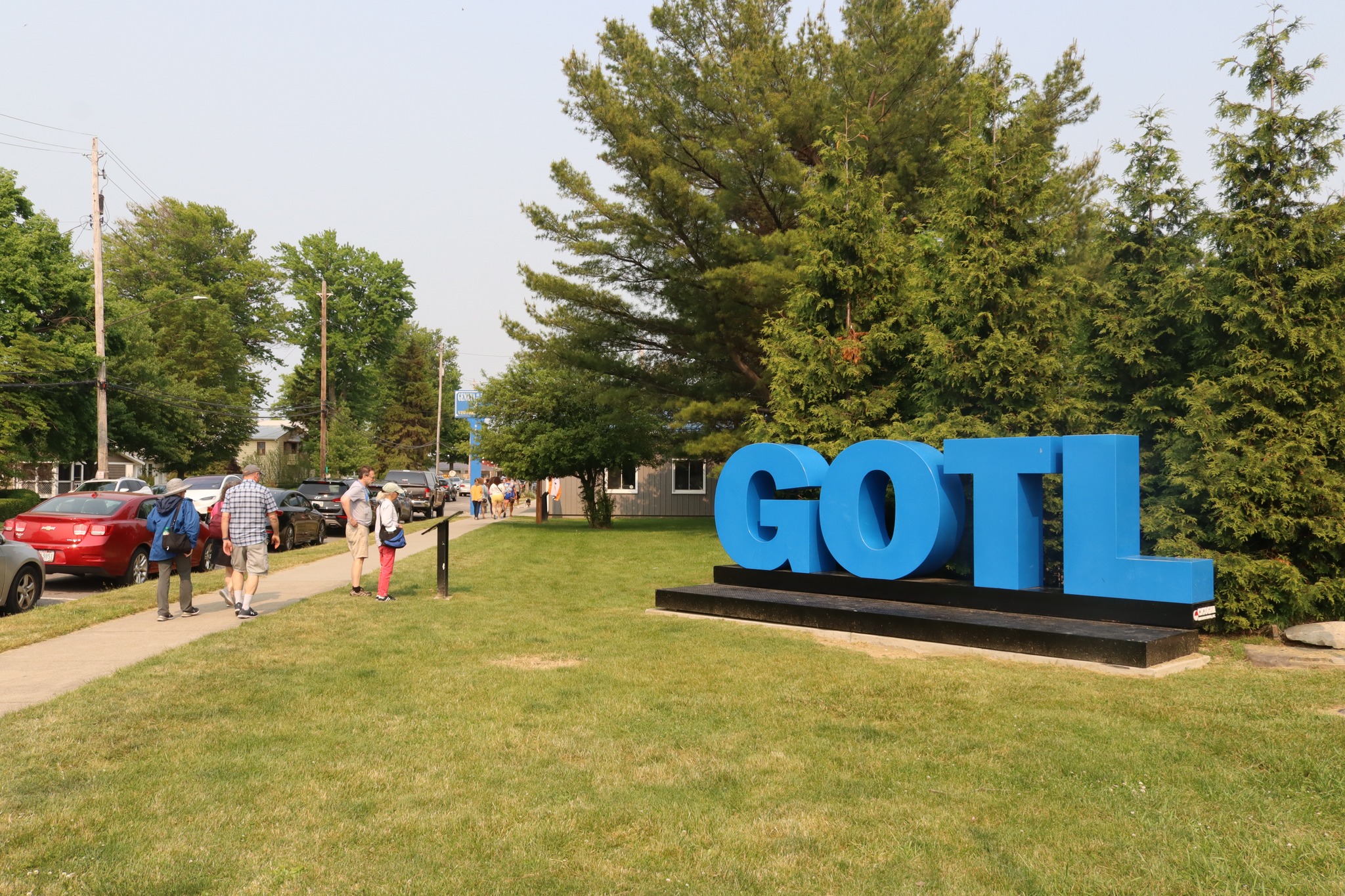
GOTL! Geneva-on-the-Lake, Ohio, is a pint-sized Wildwood, New Jersey-meets-Great Lakes if the Boardwalk amusement piers were replaced with biker bars. As a tourist resort, Geneva-on-the-Lake goes back to 1869 when it established a reputation for sturgeon fishing that attracted the Henry Ford-Harvey Firestone-John D. Rockefeller trio of early auto-campers. Amusement rides followed after World War II.
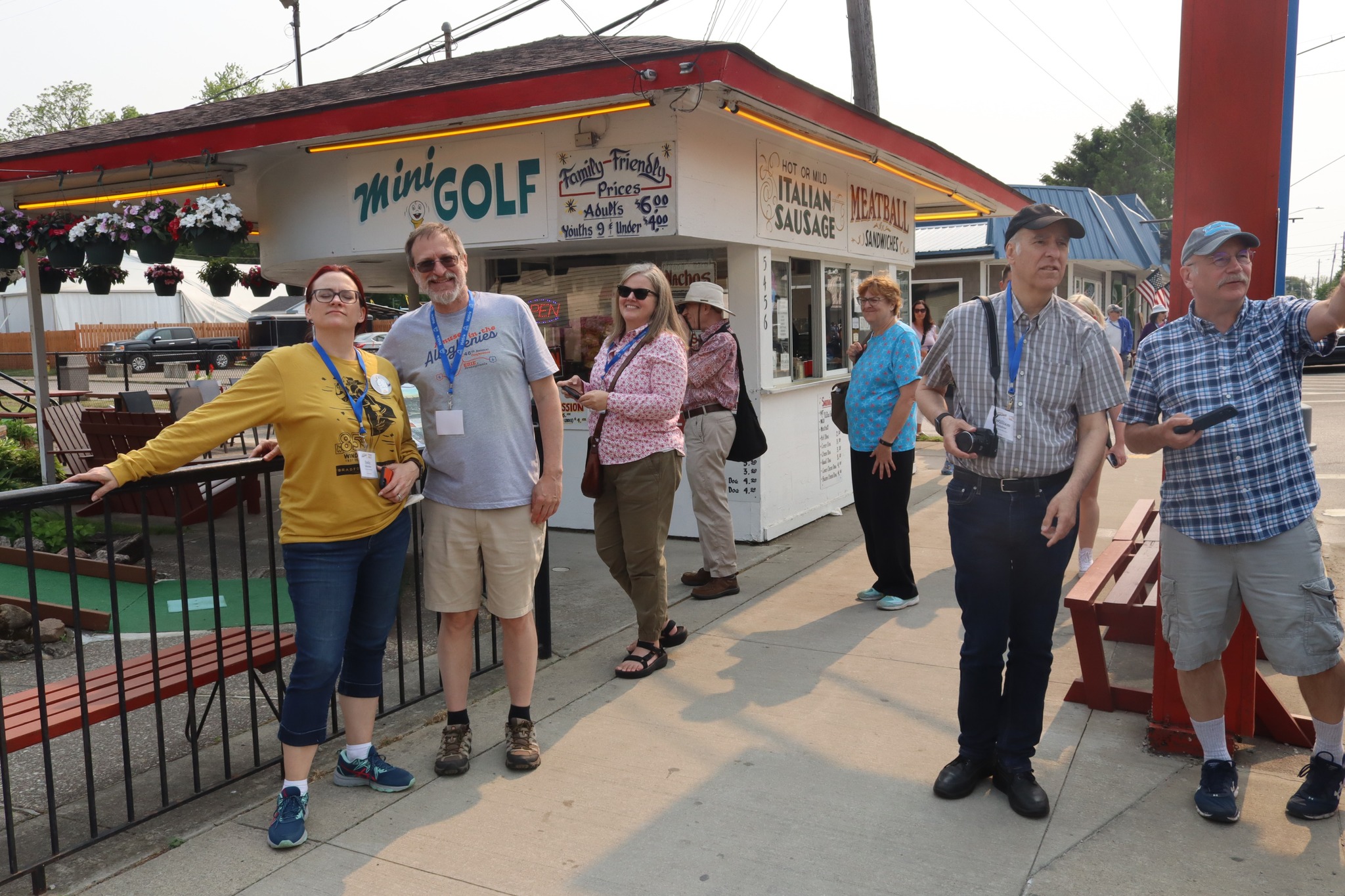
Opened in 1924, Geneva-on-the-Lake Mini Golf is now America’s oldest operating miniature golf course.
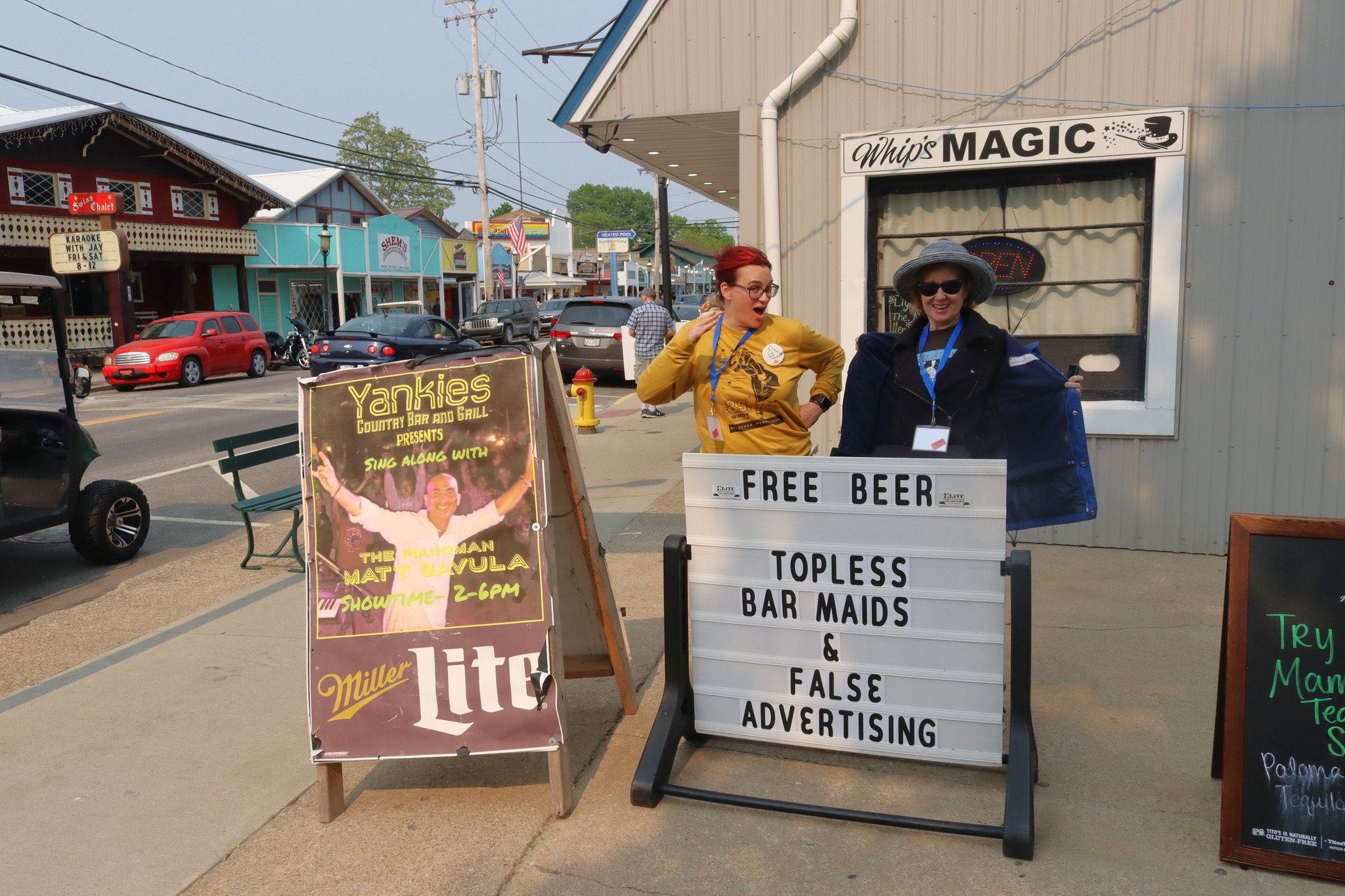
Free beer and topless waitresses is not that far from the truth on any given summer weekend evening at Geneva-on-the-Lake. While we were there, it was apparent the beer was flowing like water, and bike broads were baring their breasts.
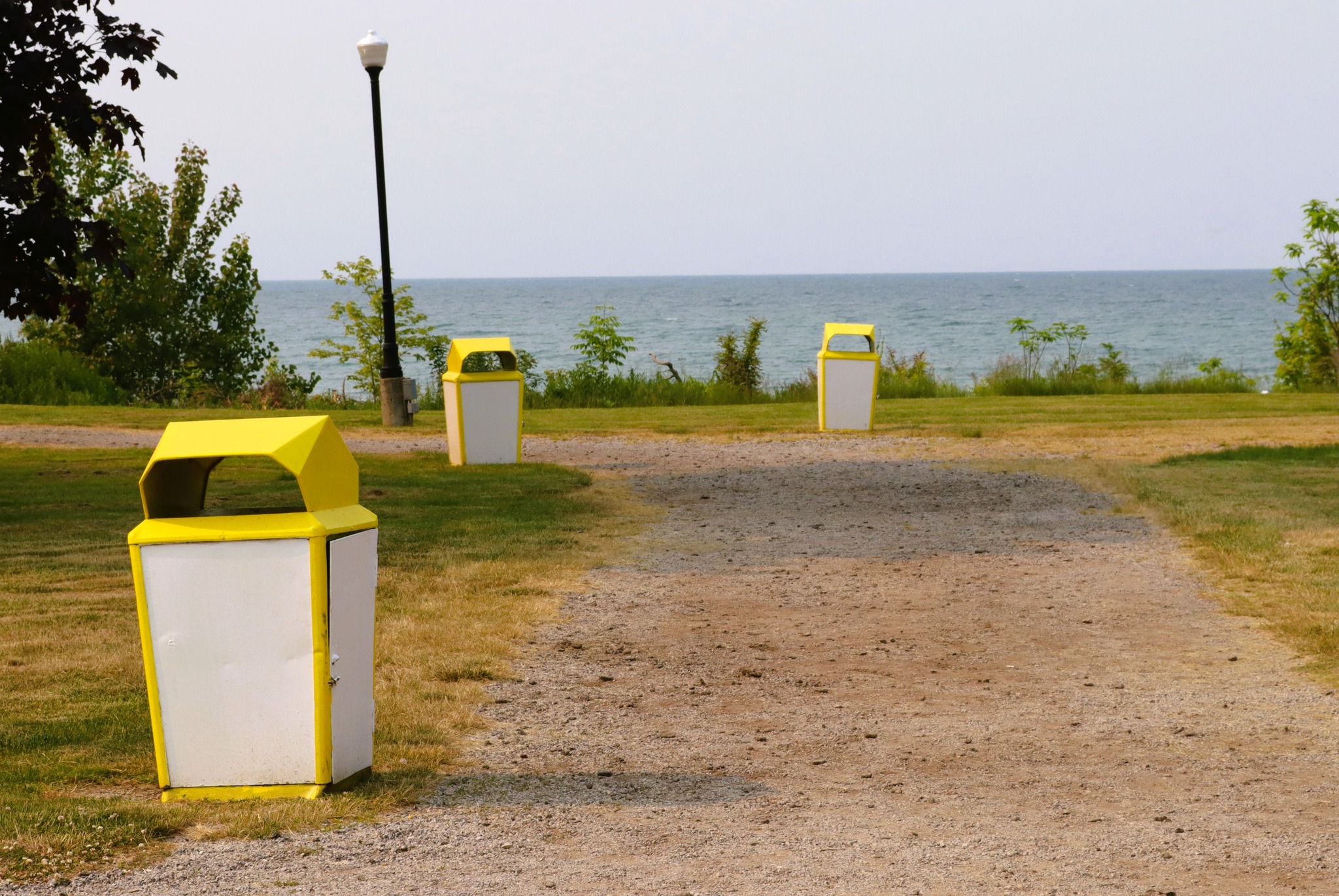
Relic amusement park trash cans on the shores of Lake Erie at Geneva-on-the-Lake, Ohio, where Pop Pera opened Pera’s Park in 1945. The named was changed to Pera’s Kiddieland in 1955, and then Erieview Park in 1980 when adult riders were added. The park was closed and auctioned off in 2006.
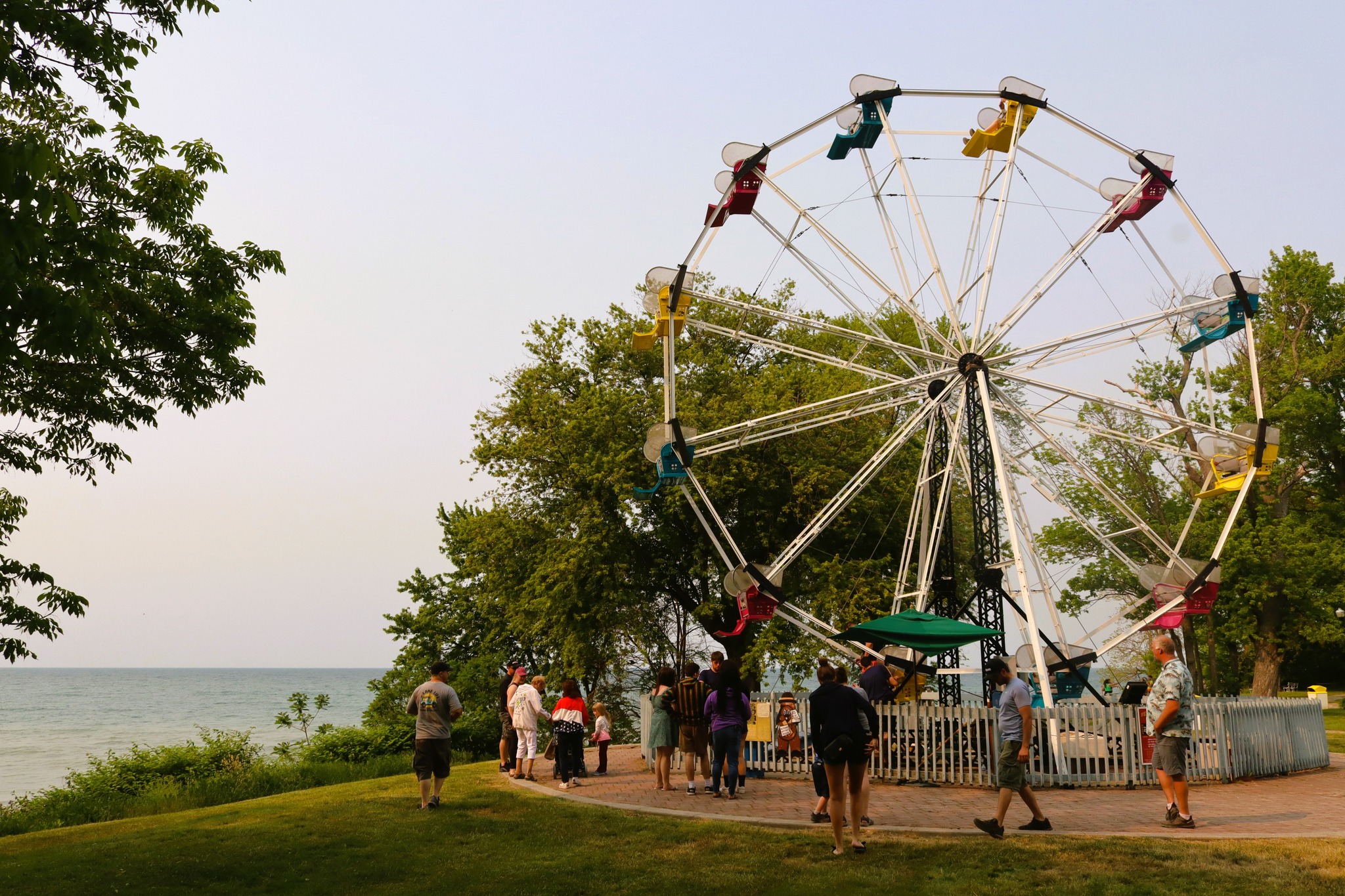
An Eli Bridge ferris wheel still spins over Lake Erie as the last remnant of Geneva-on-the-Lake’s Erieview Park.
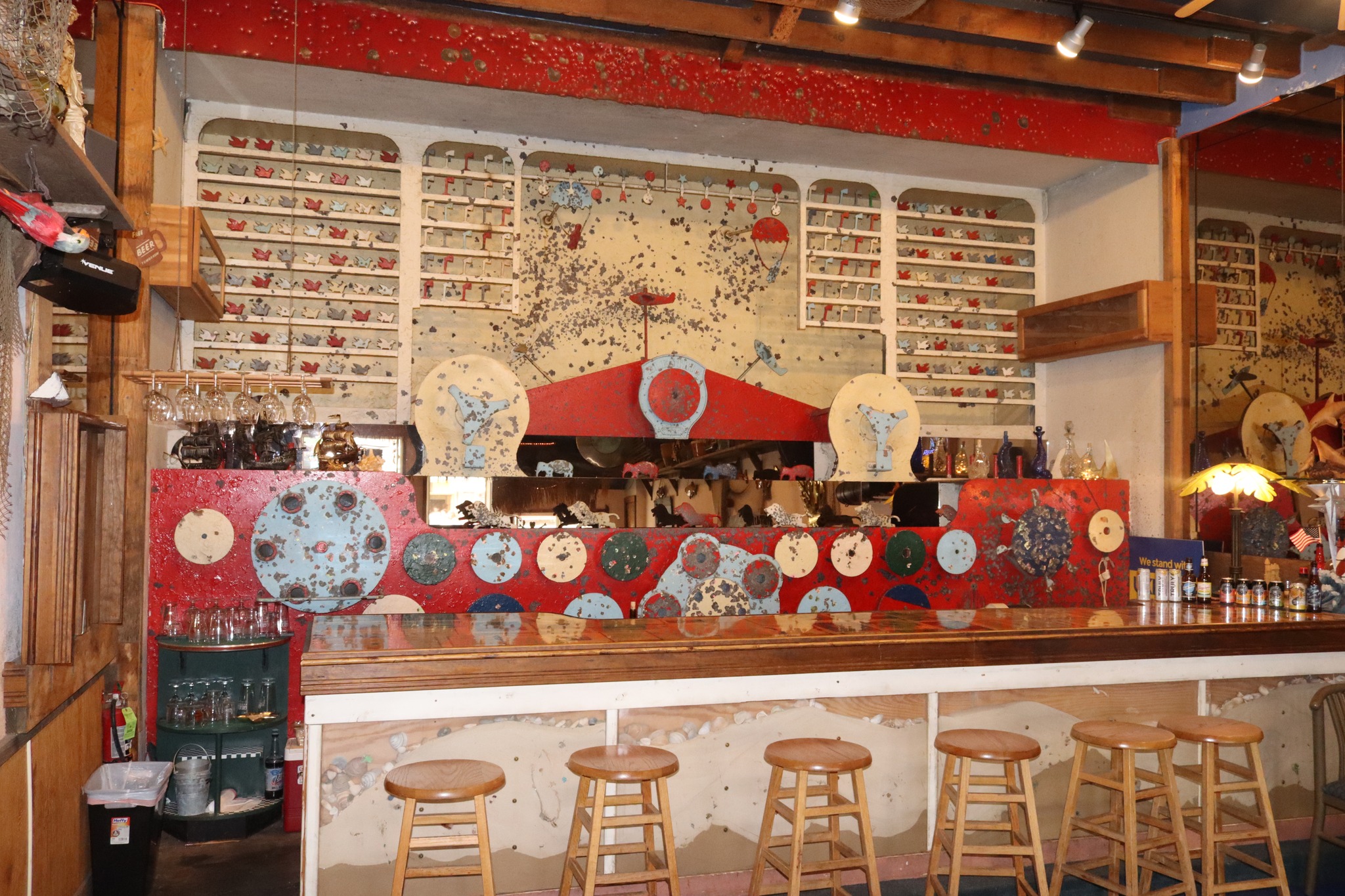
A back wall at Sandy Chanty’s Seafood Restaurant was demolished to reveal a relic shooting gallery that came to Geneva-on-the-Lake, Ohio, from Coney Island in 1929. Blasted with thousands of dings from .22 caliber rifle fire, the shooting gallery operated into the 1980s.
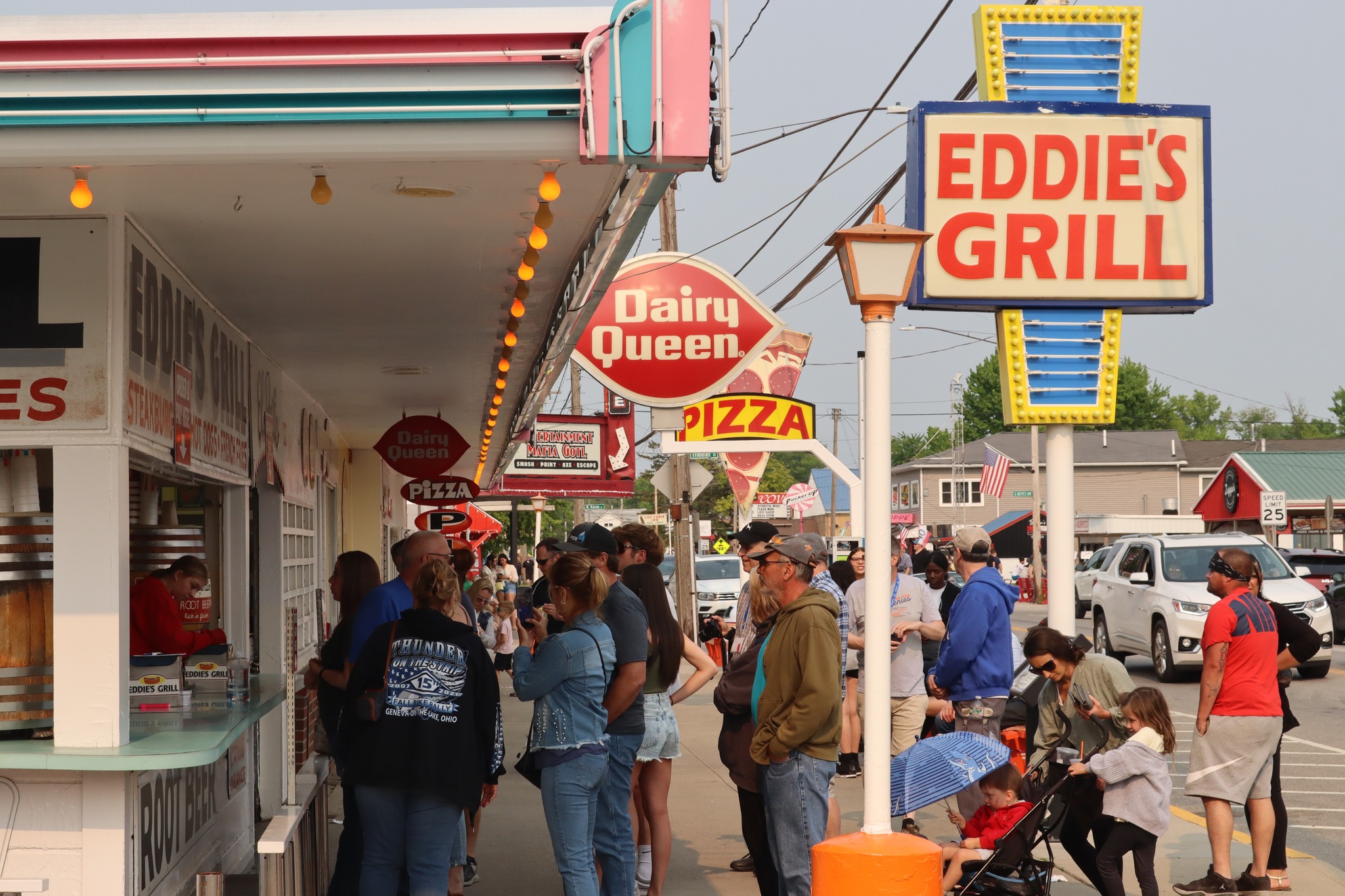
Eddie’s Grill on The Strip at Geneva-on-the-Lake, Ohio, since 1950.
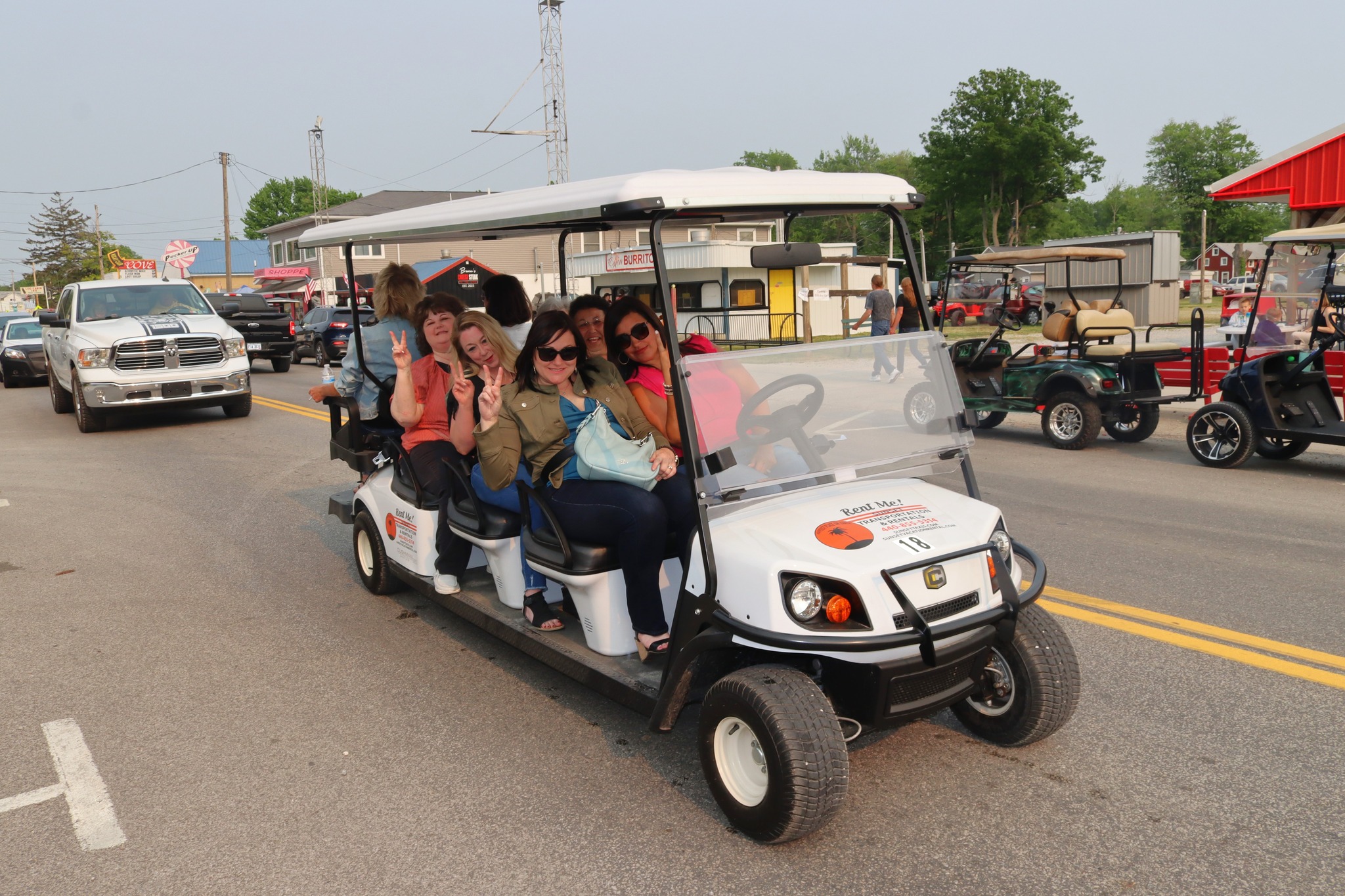
Golf cart girls on a tear at Geneva-on-the-Lake, Ohio.
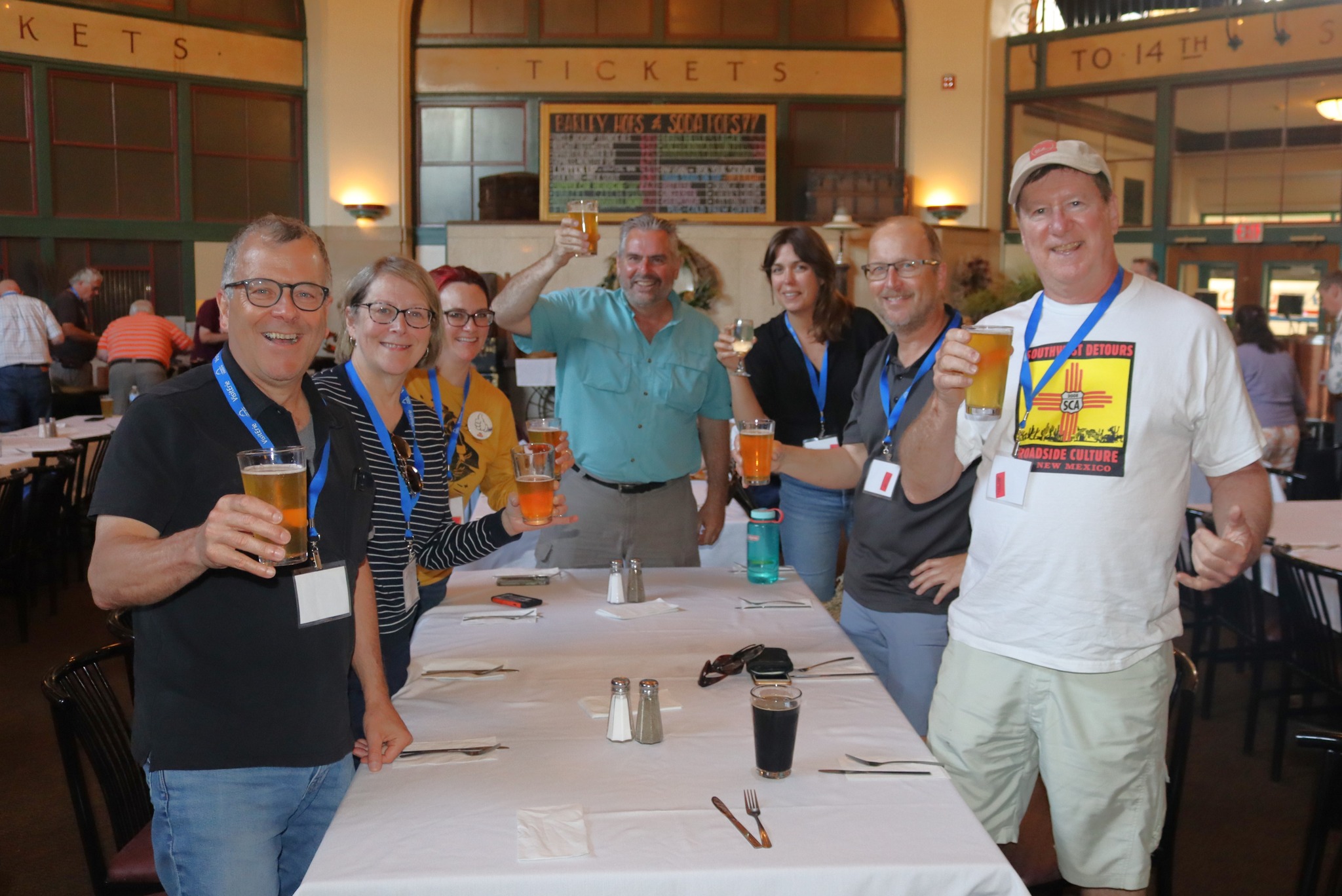
We wrapped up the 46th Annual Society for Commercial Archeology Conference with a banquet at the Brewerie in Erie’s 1927 Union Station.


